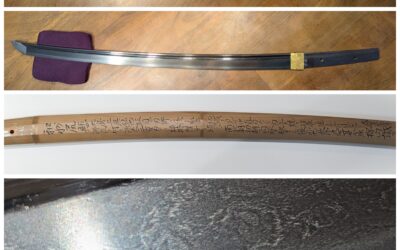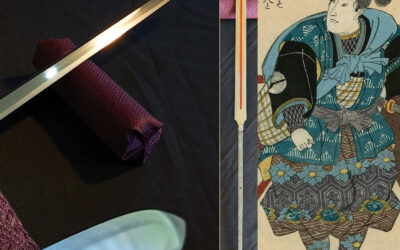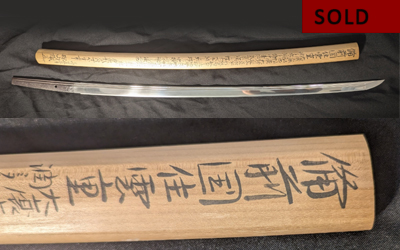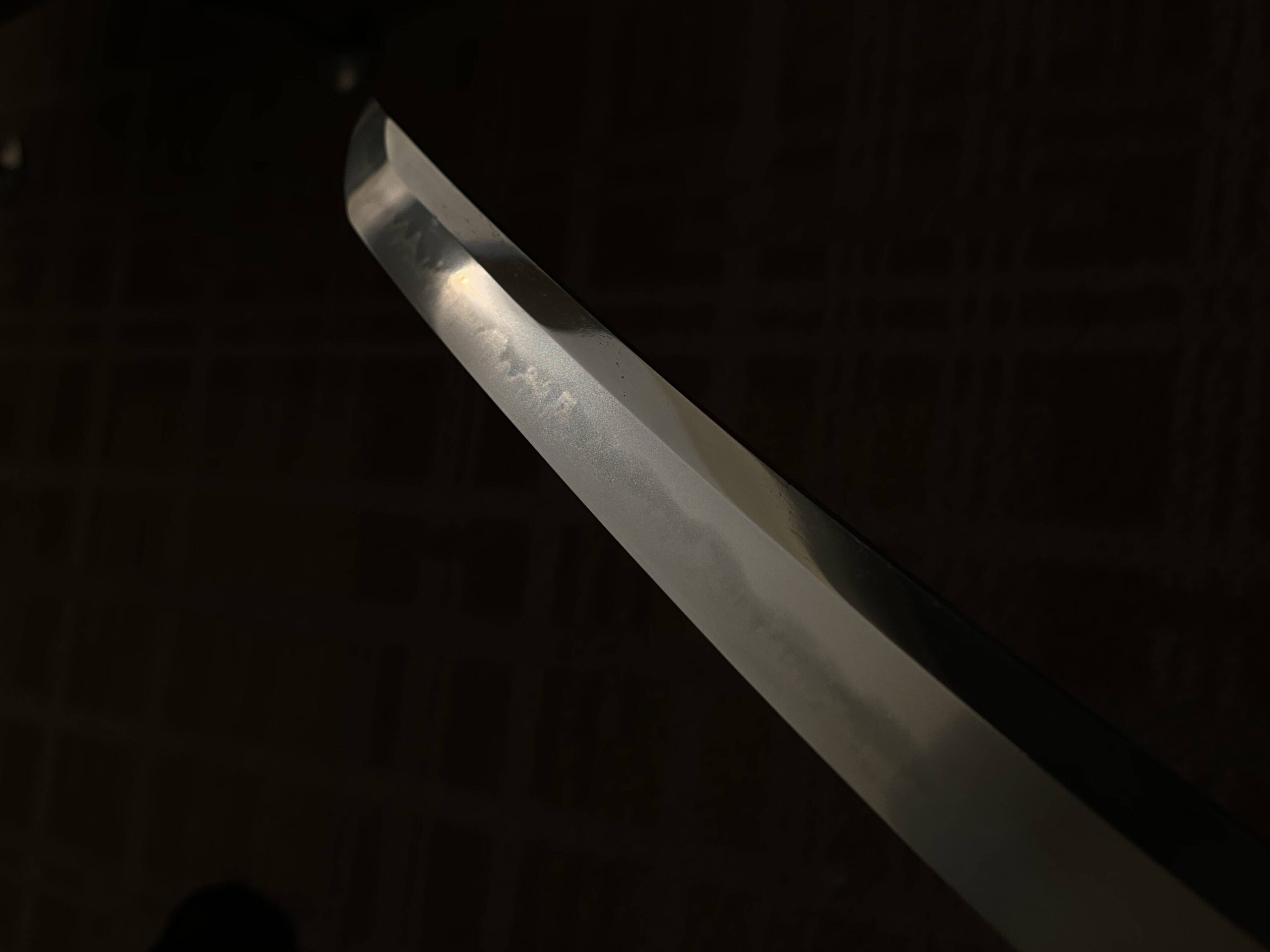



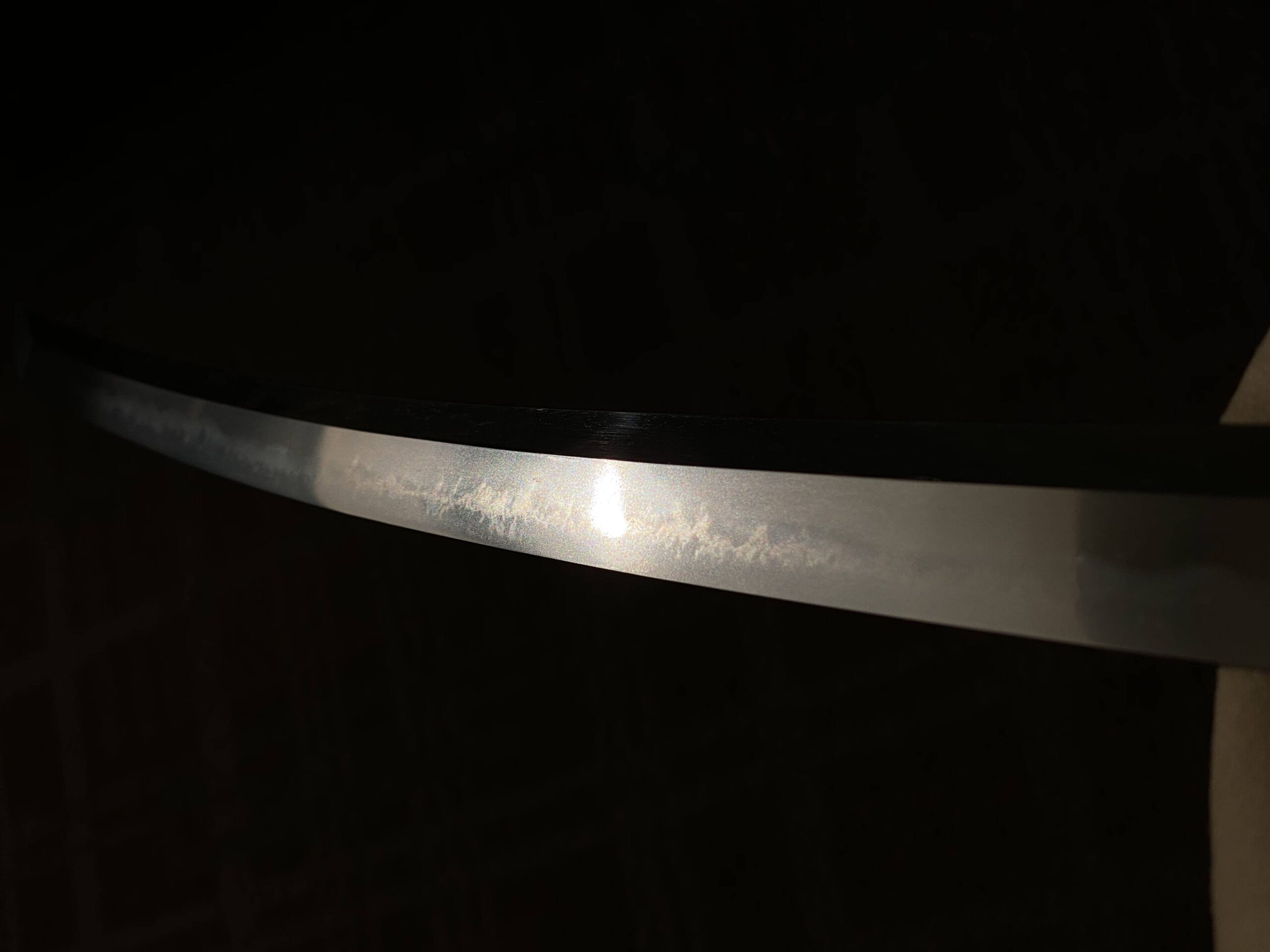
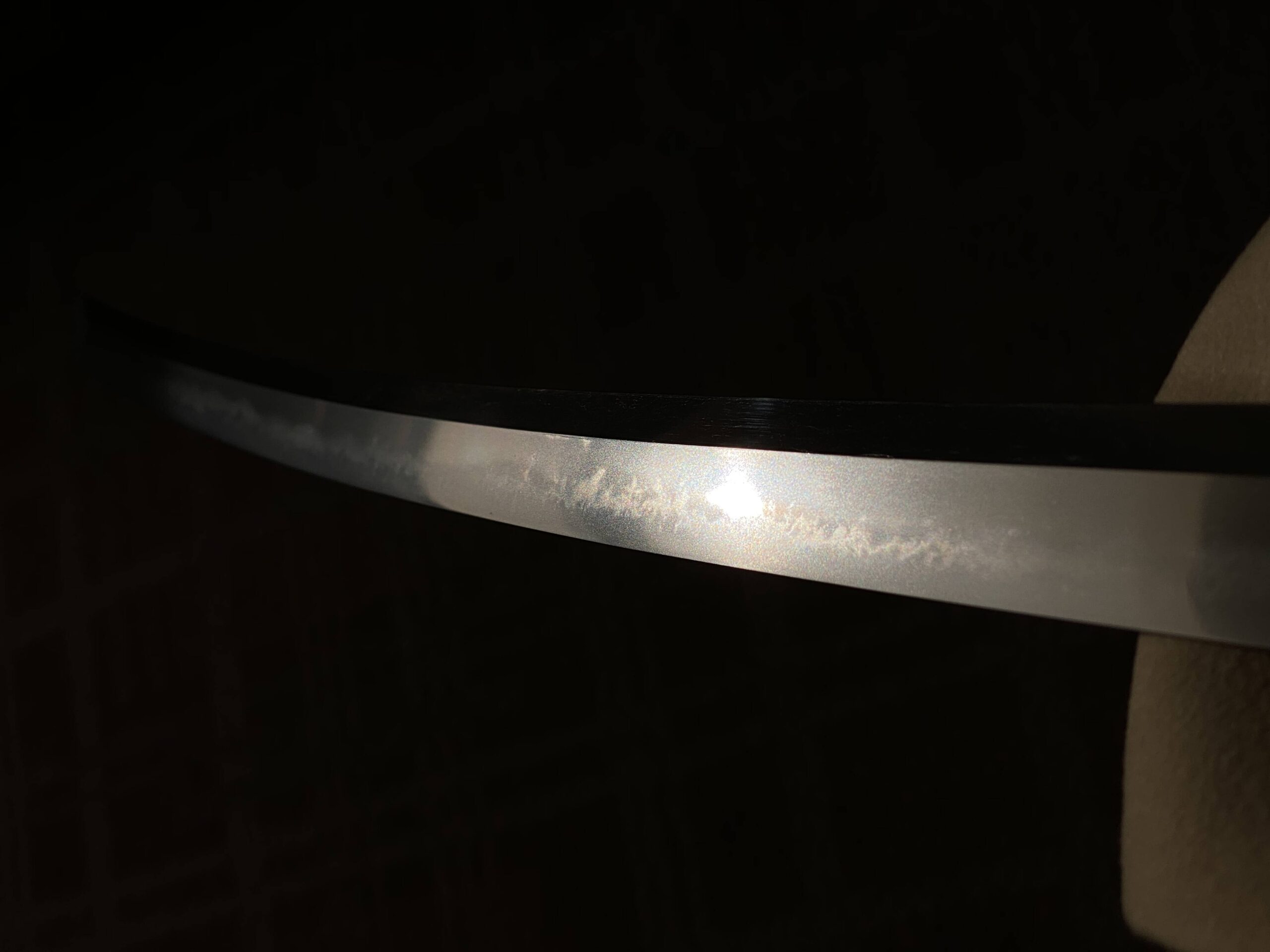
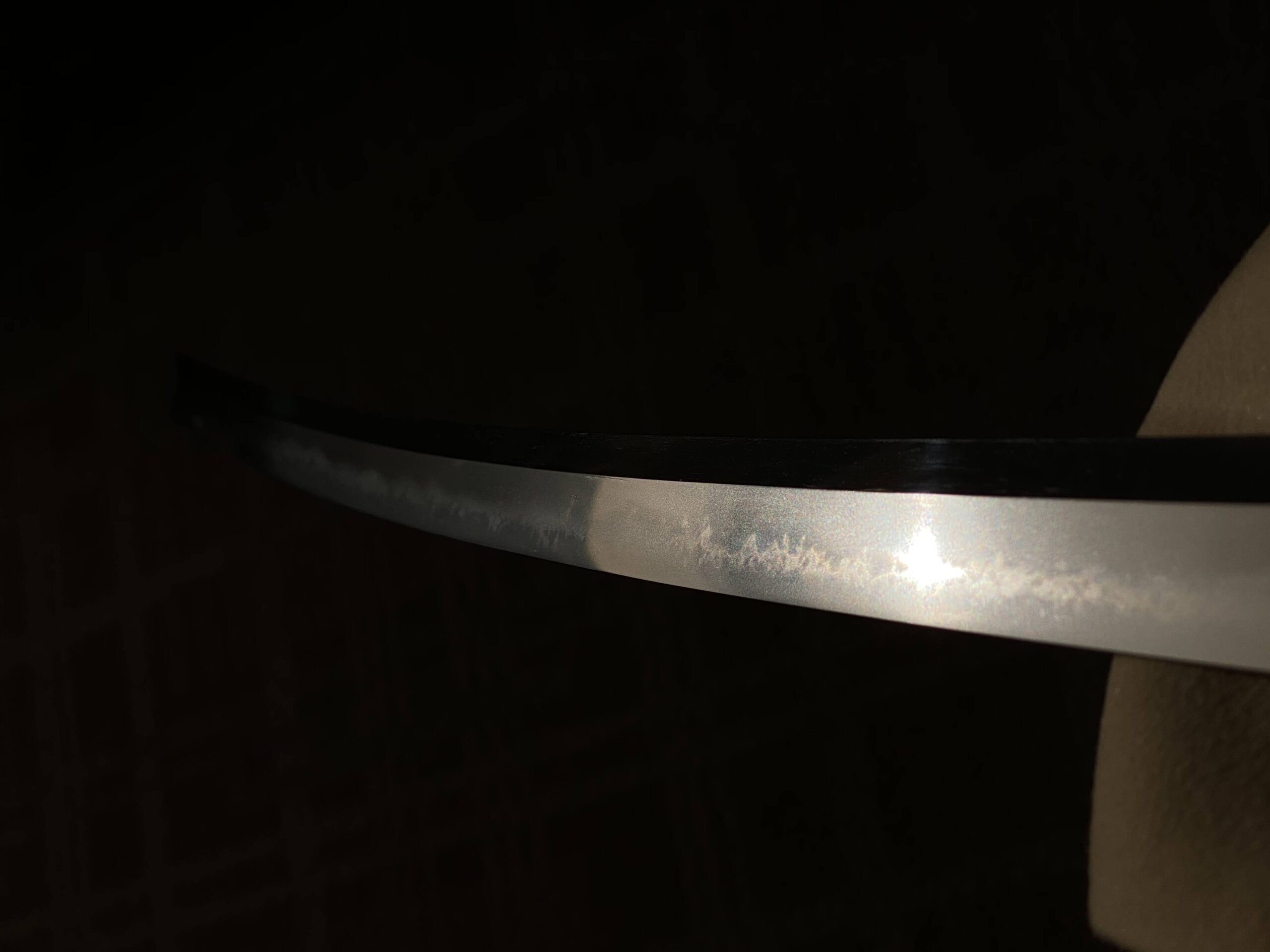
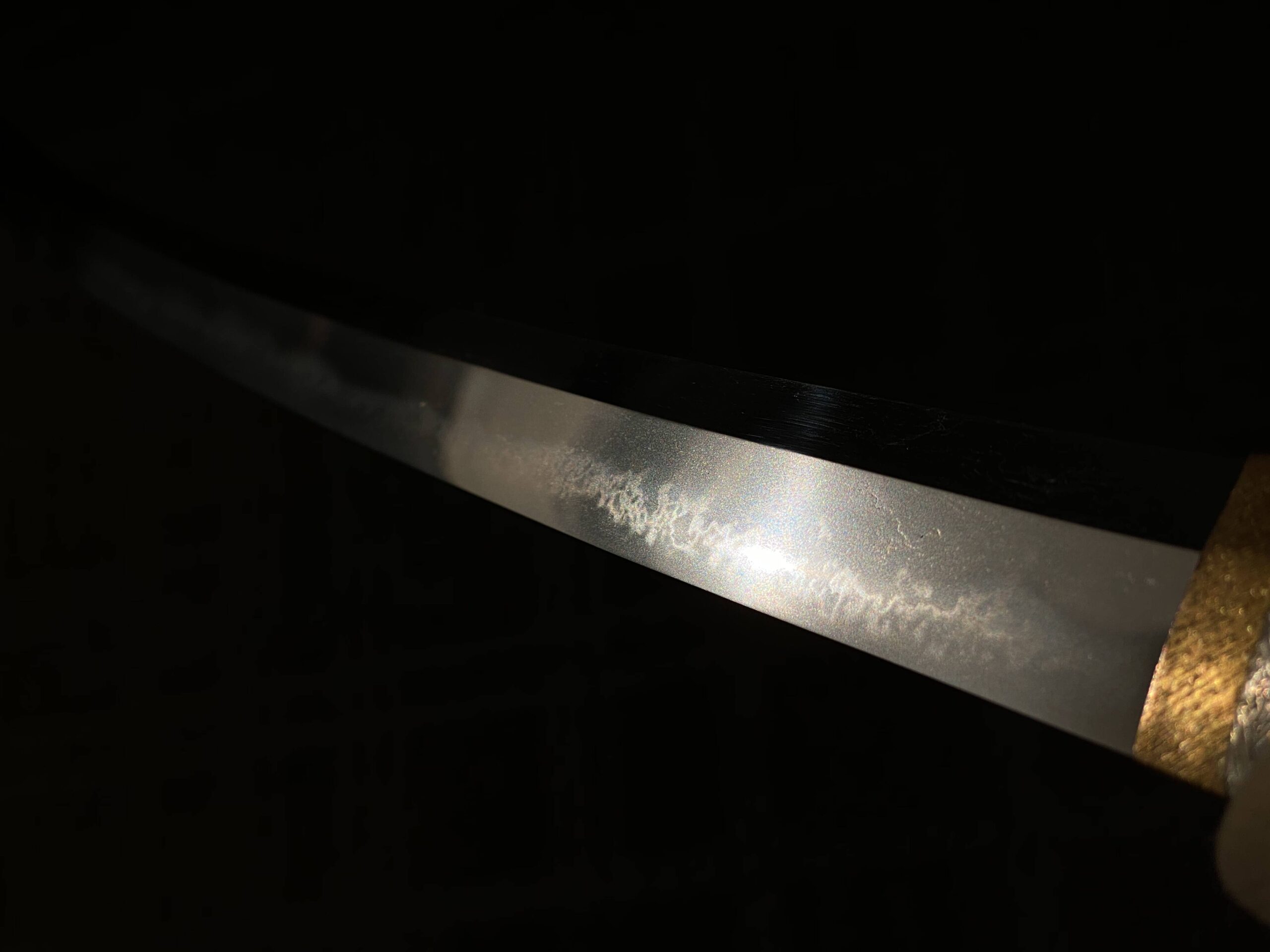
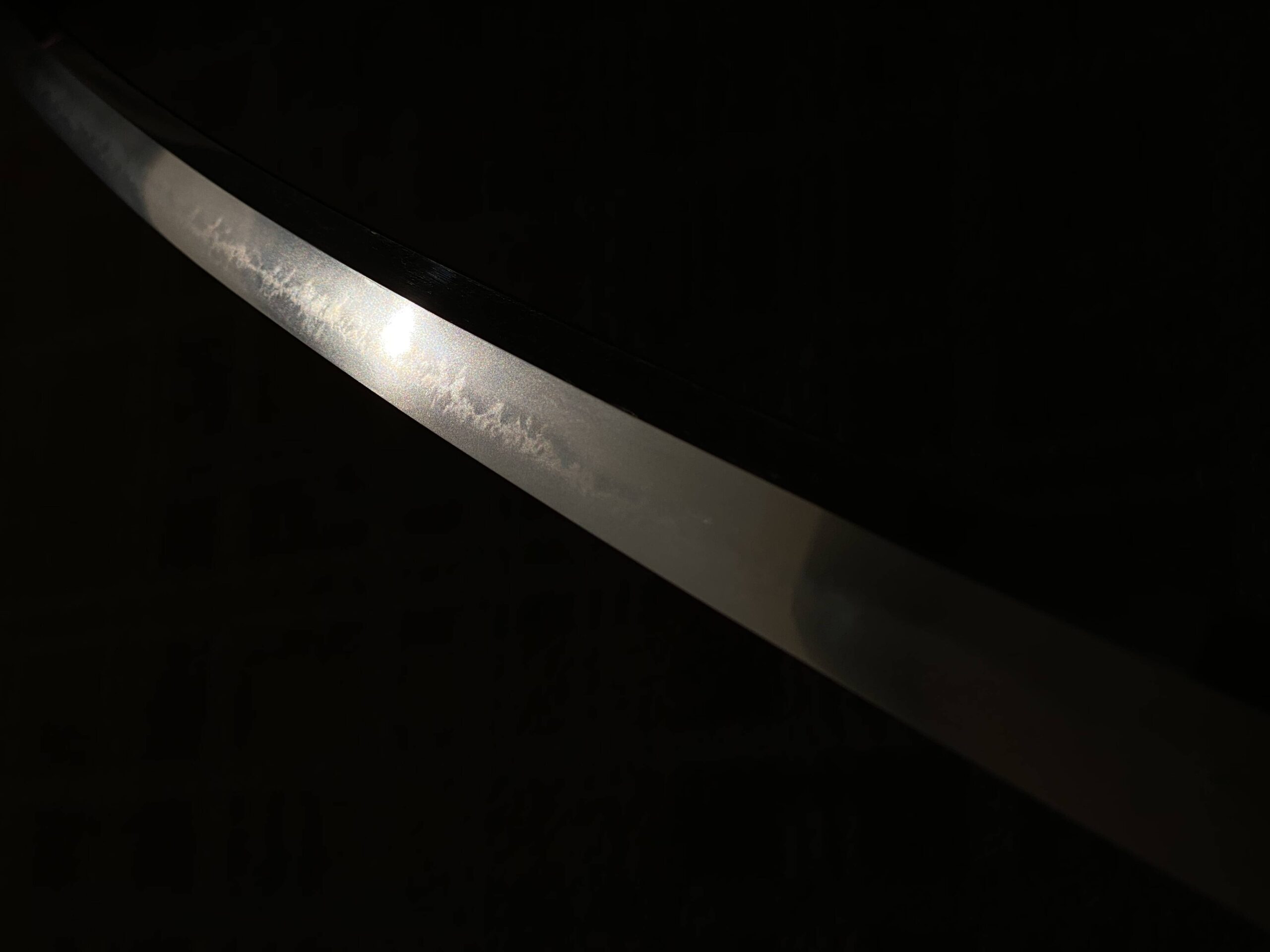
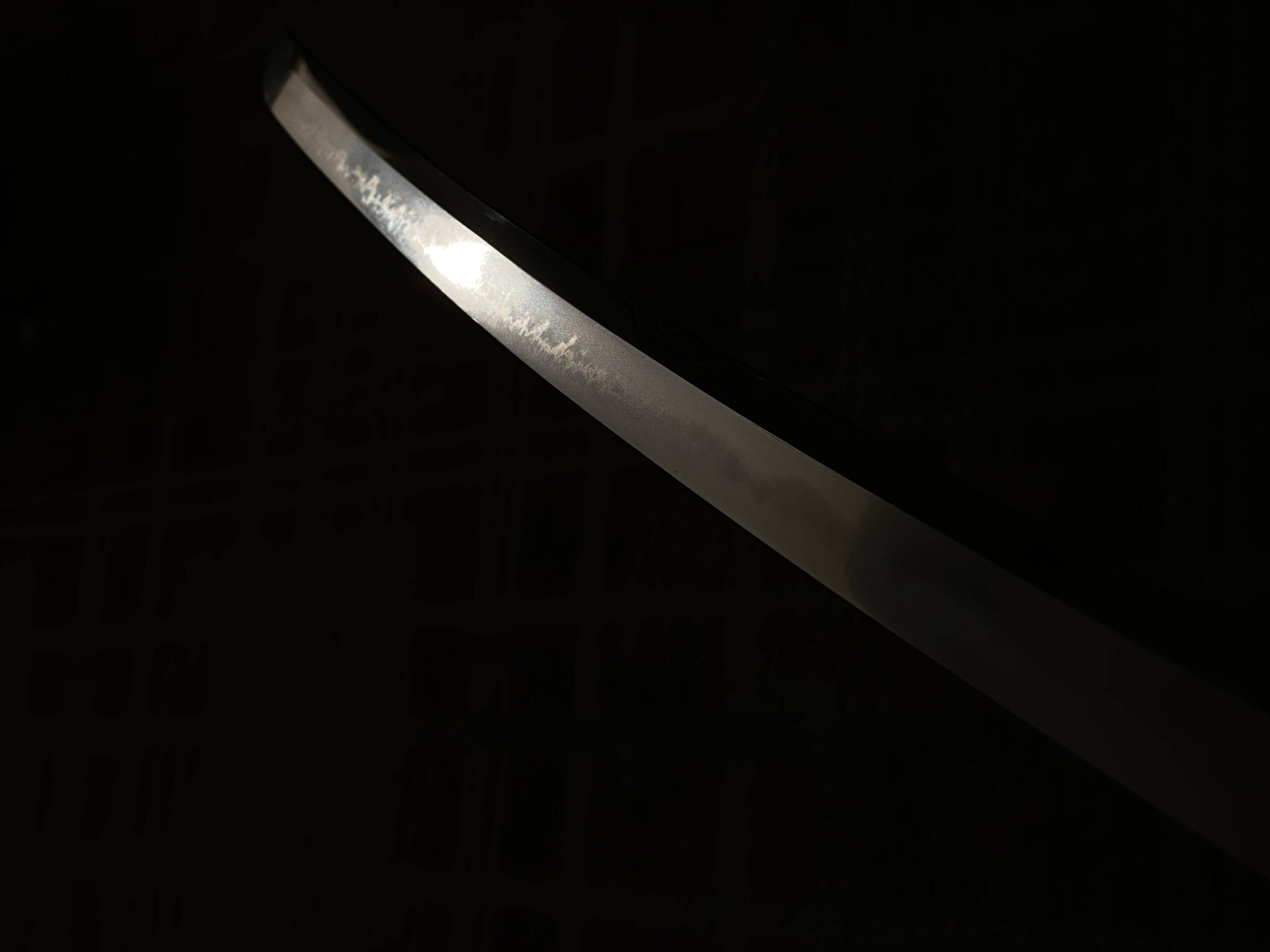

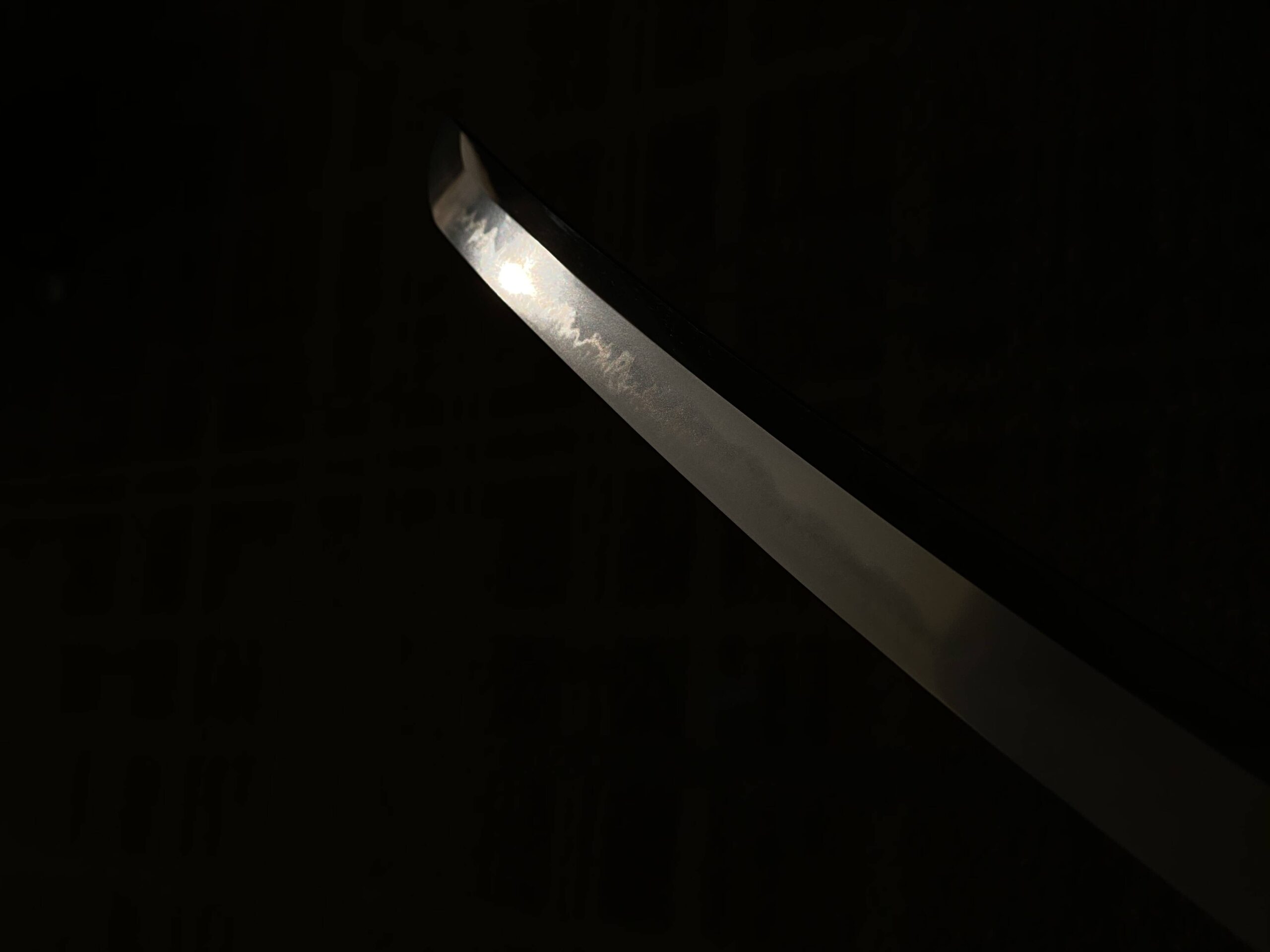
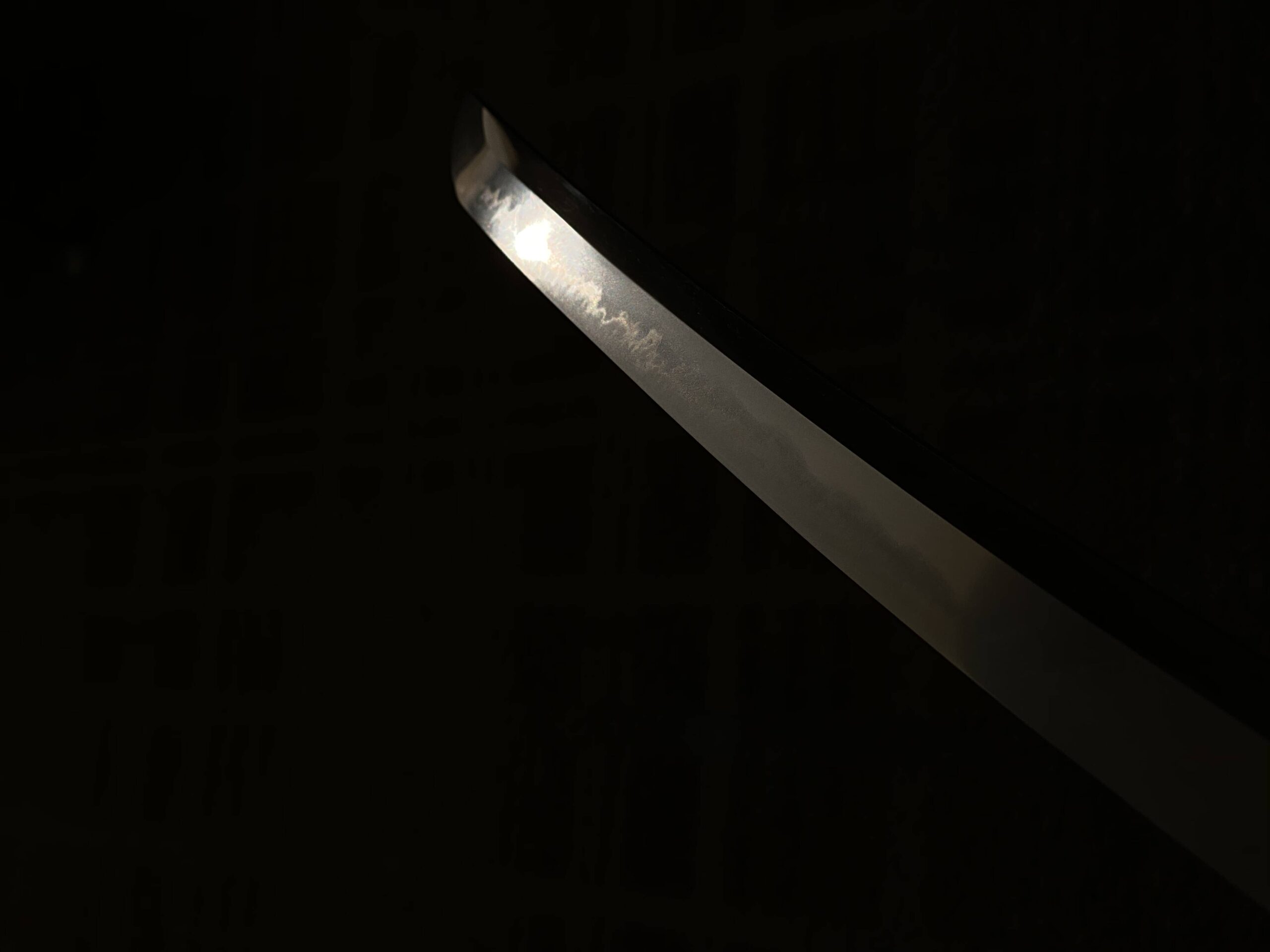

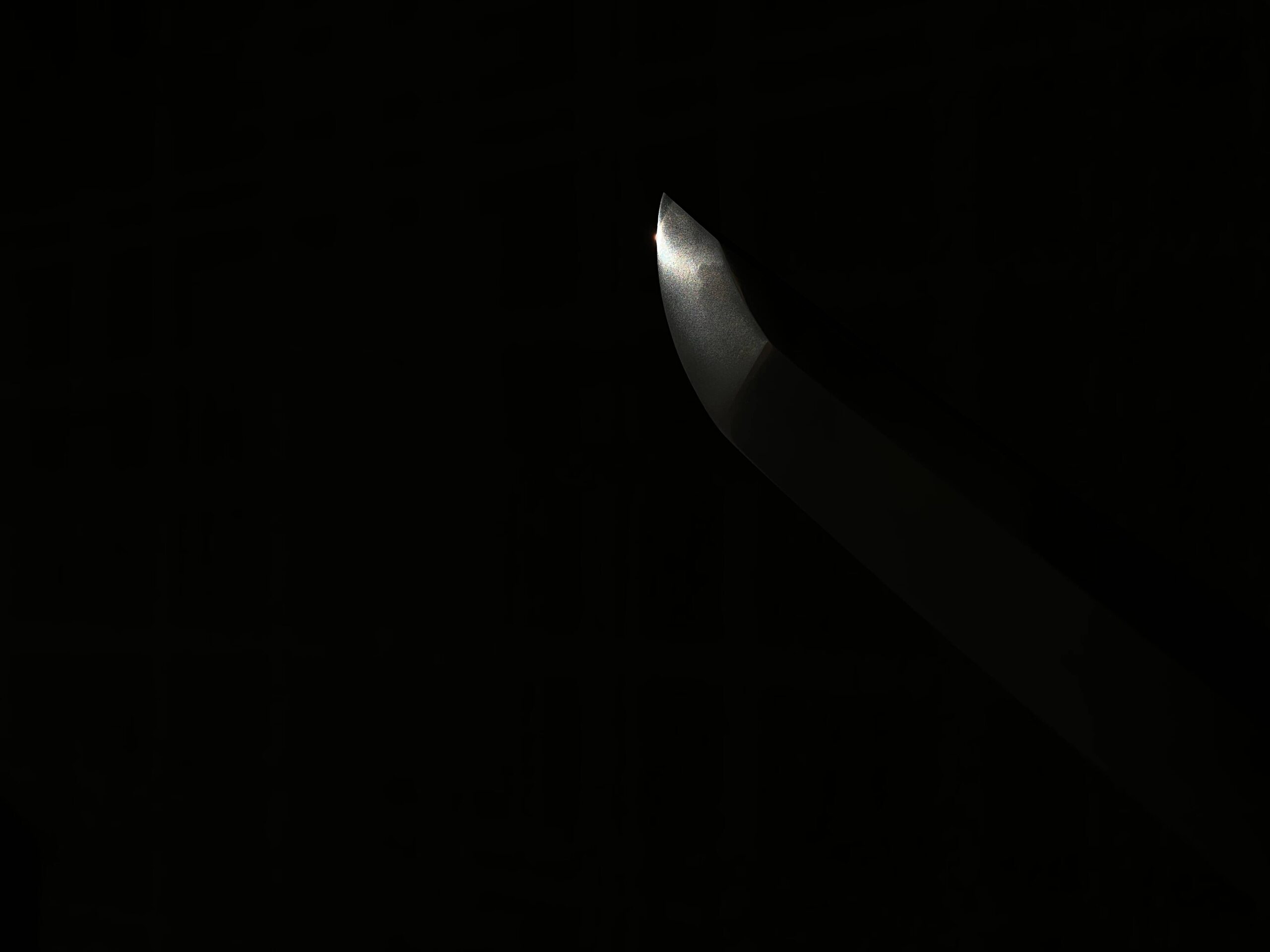
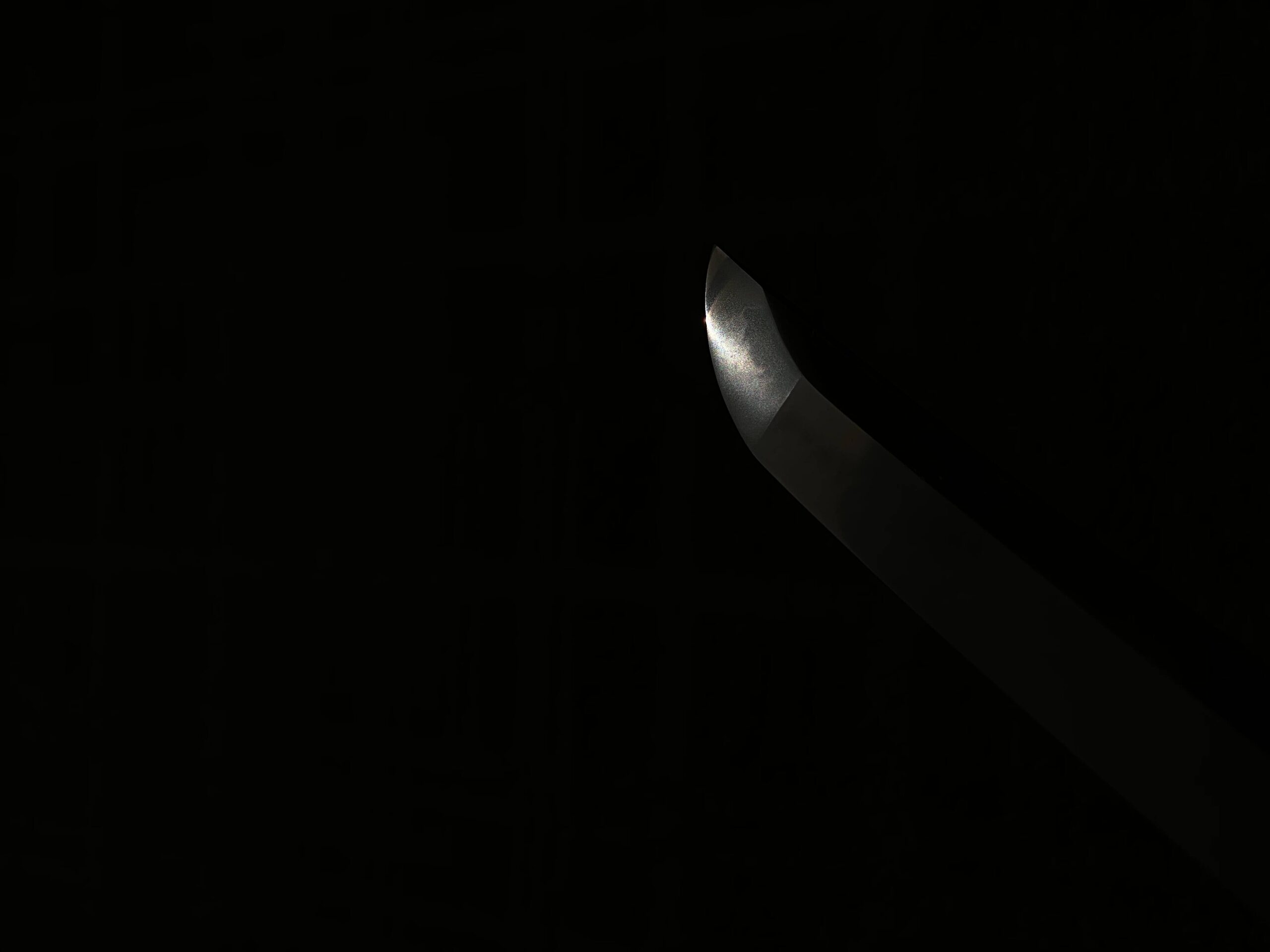

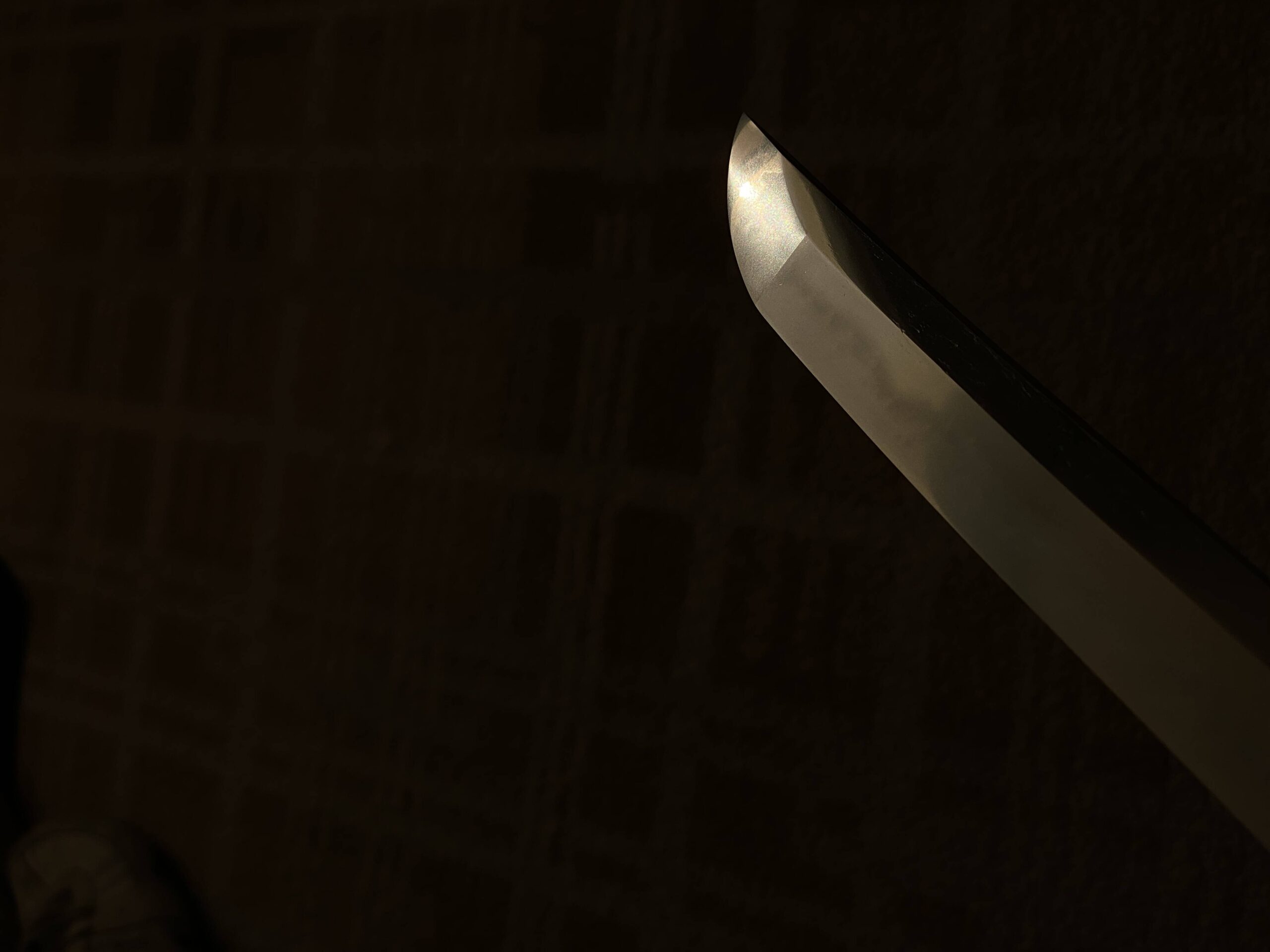
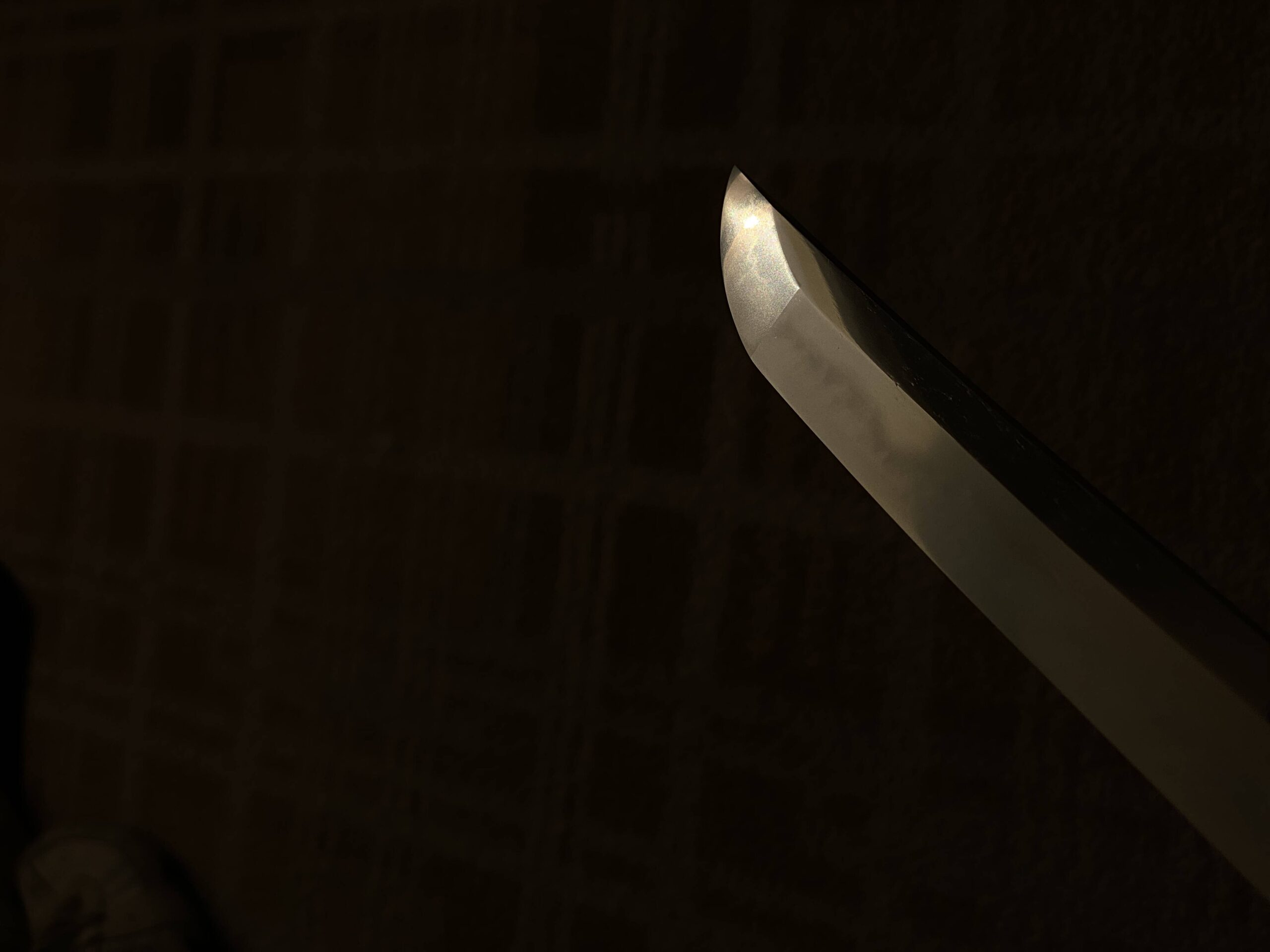

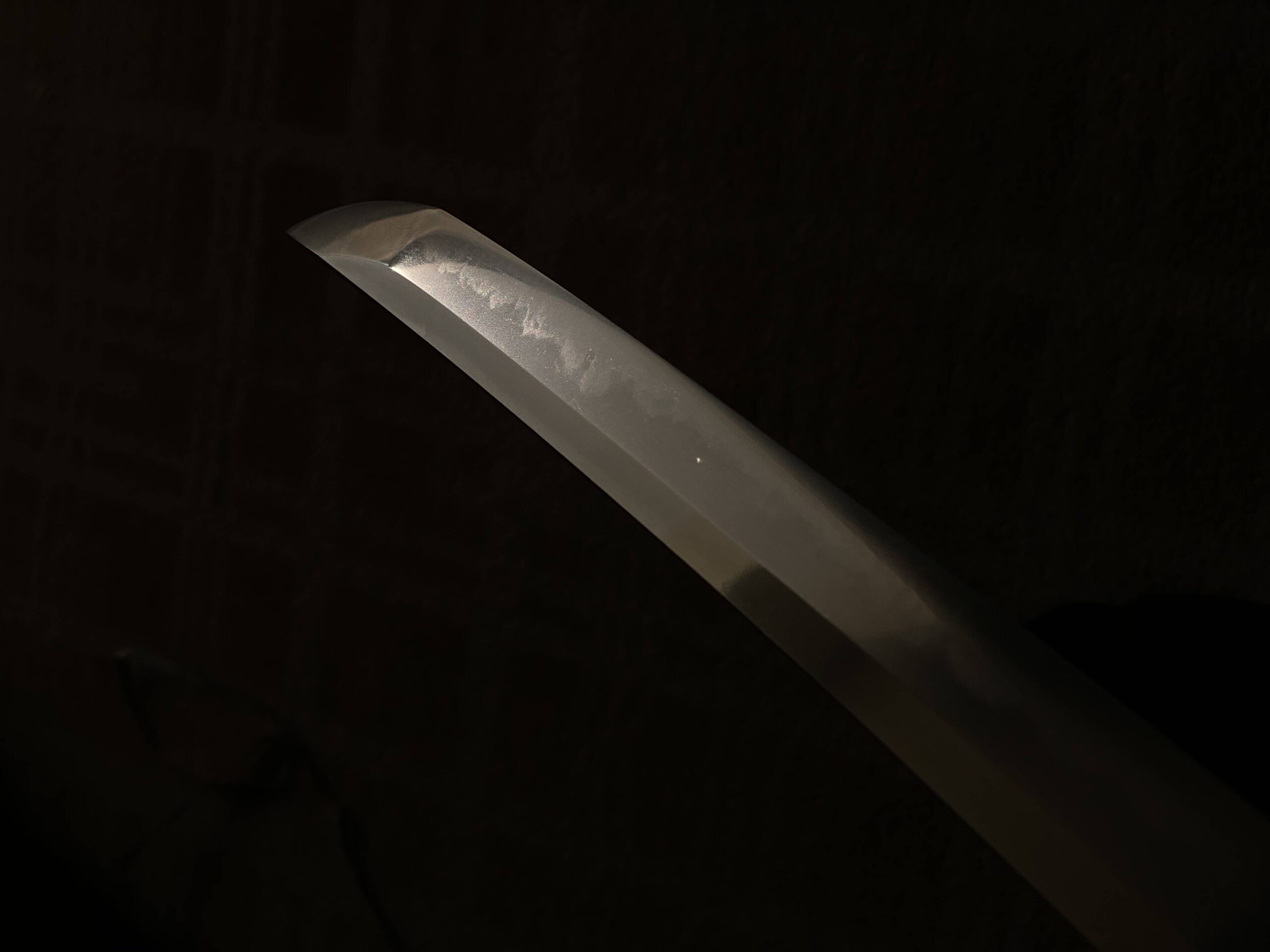
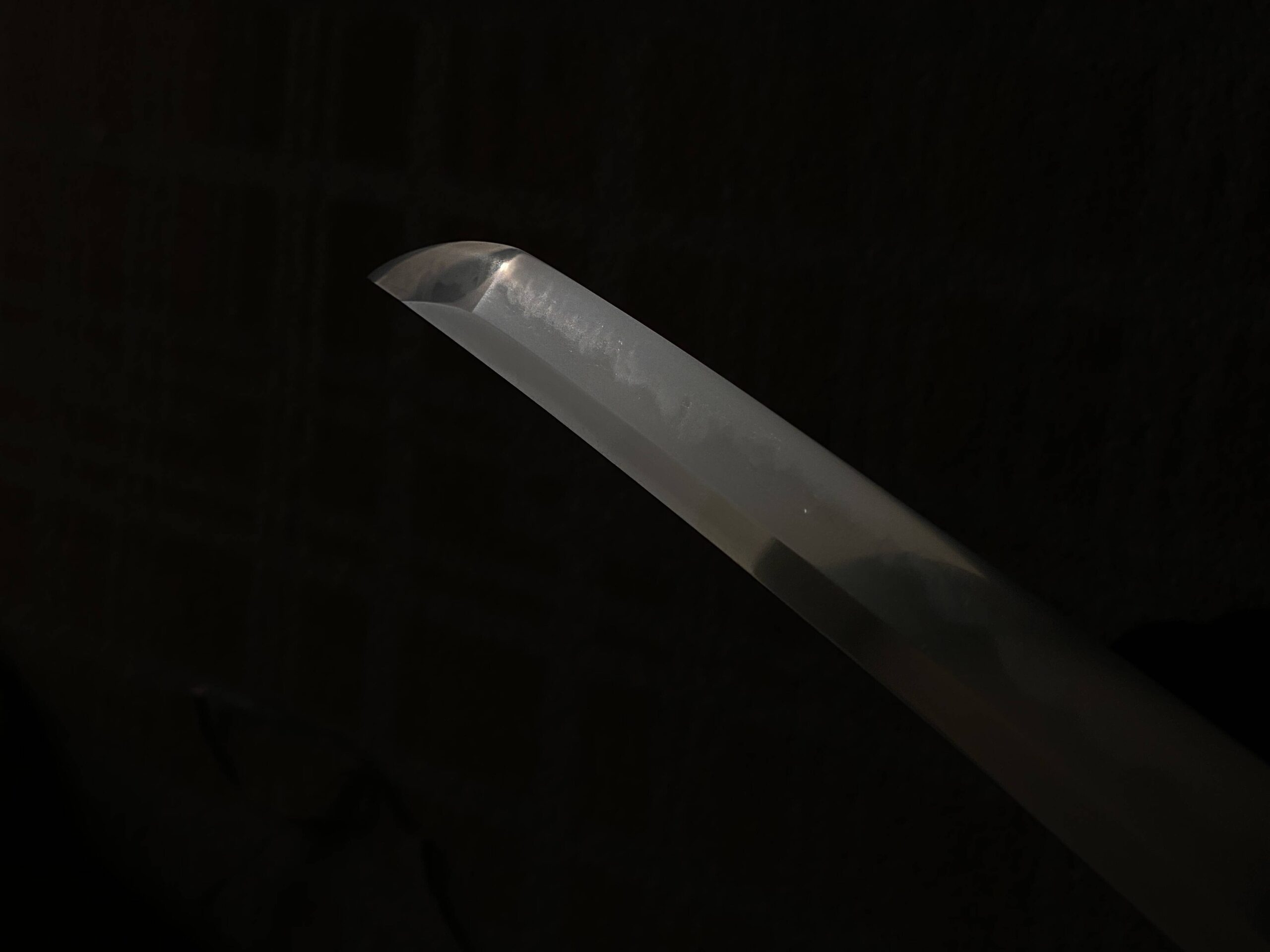
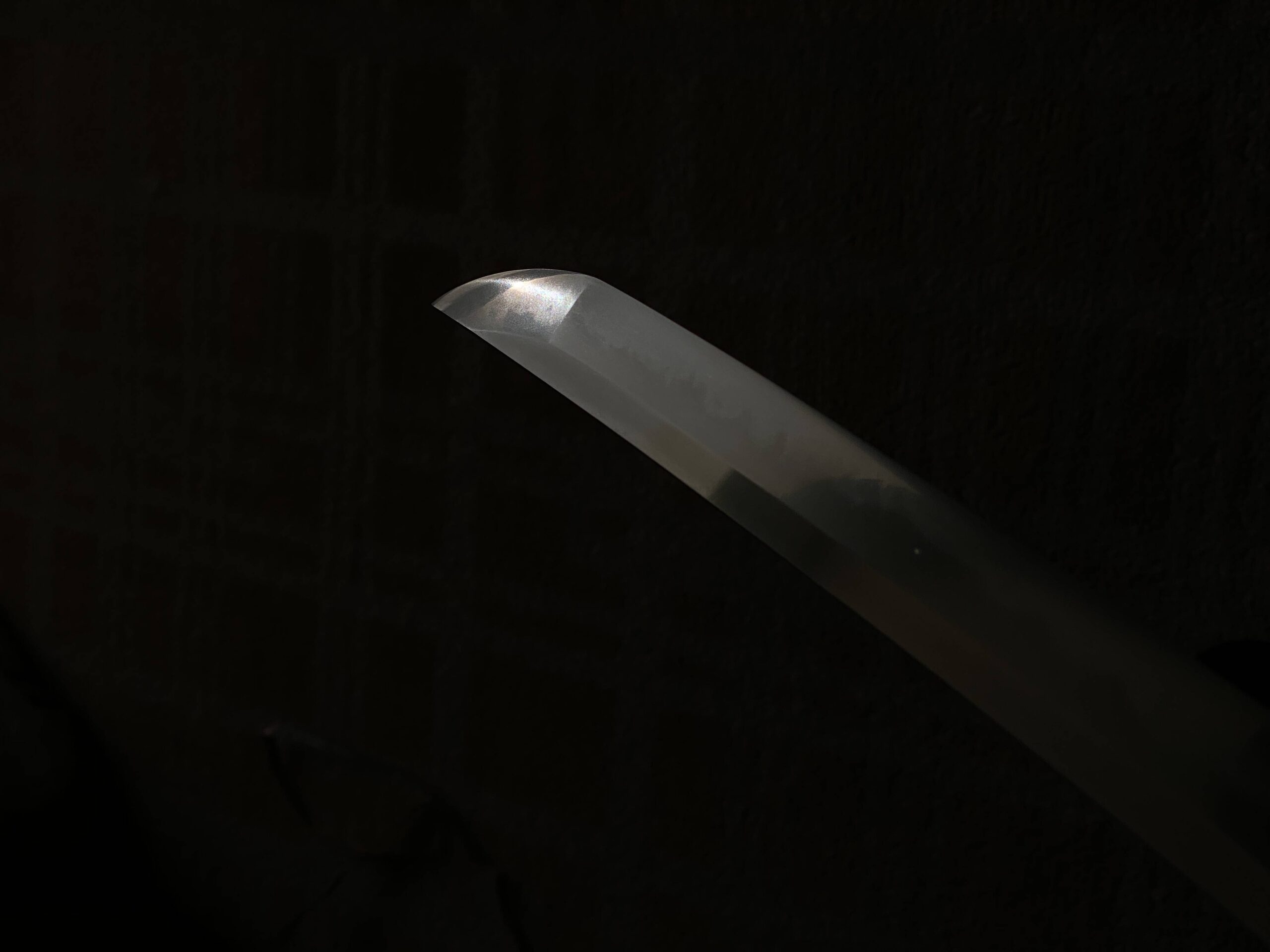
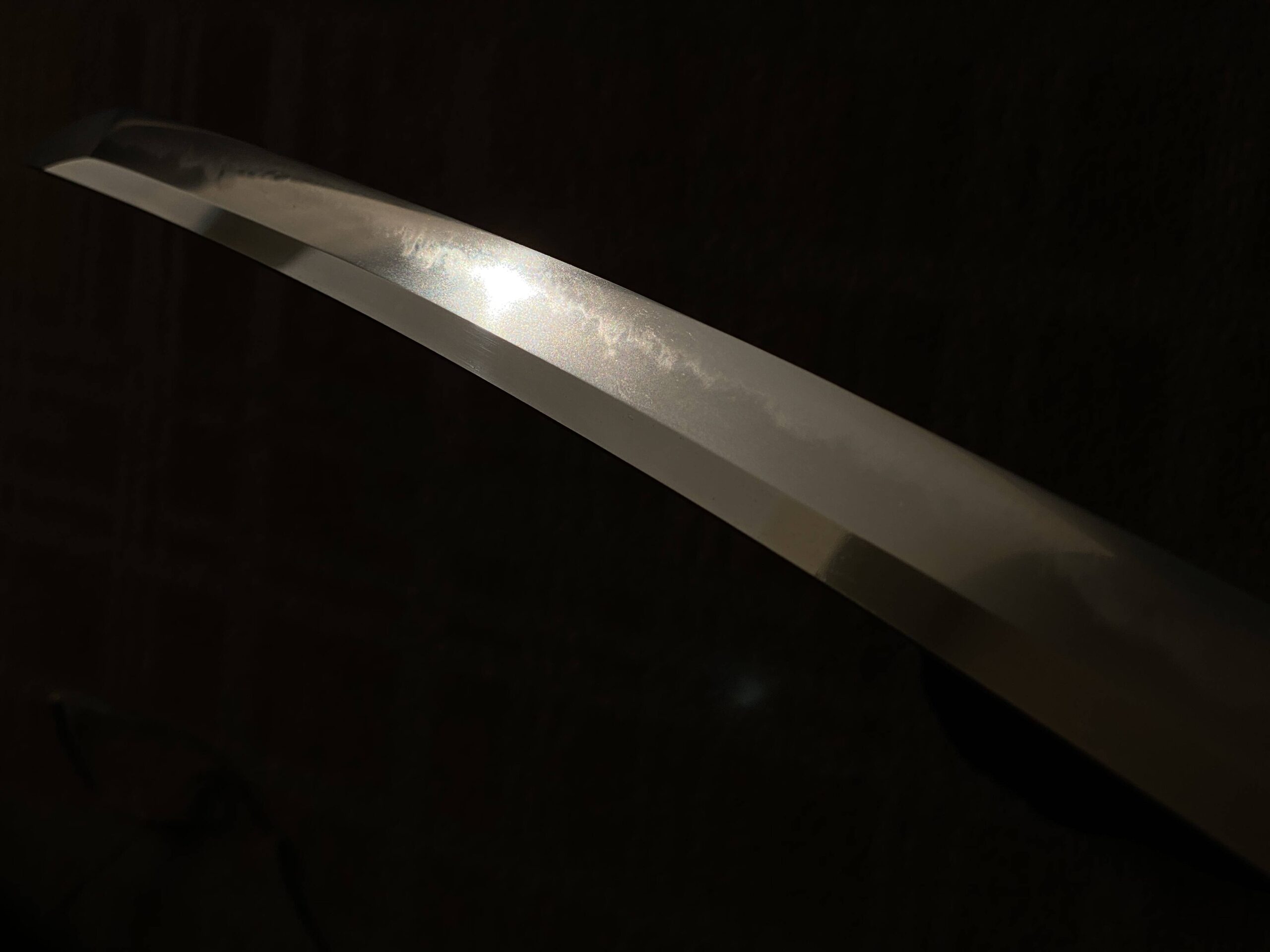
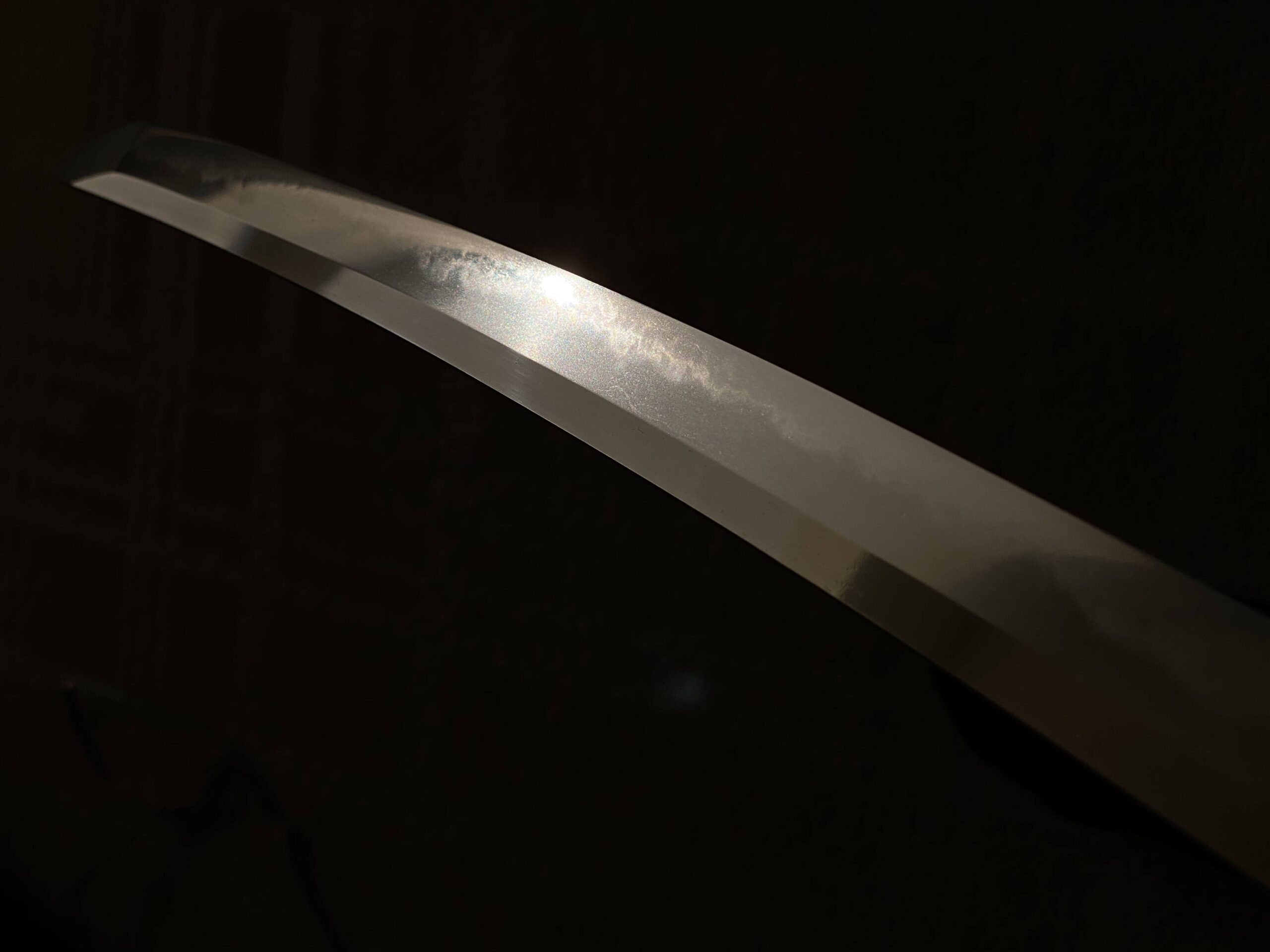
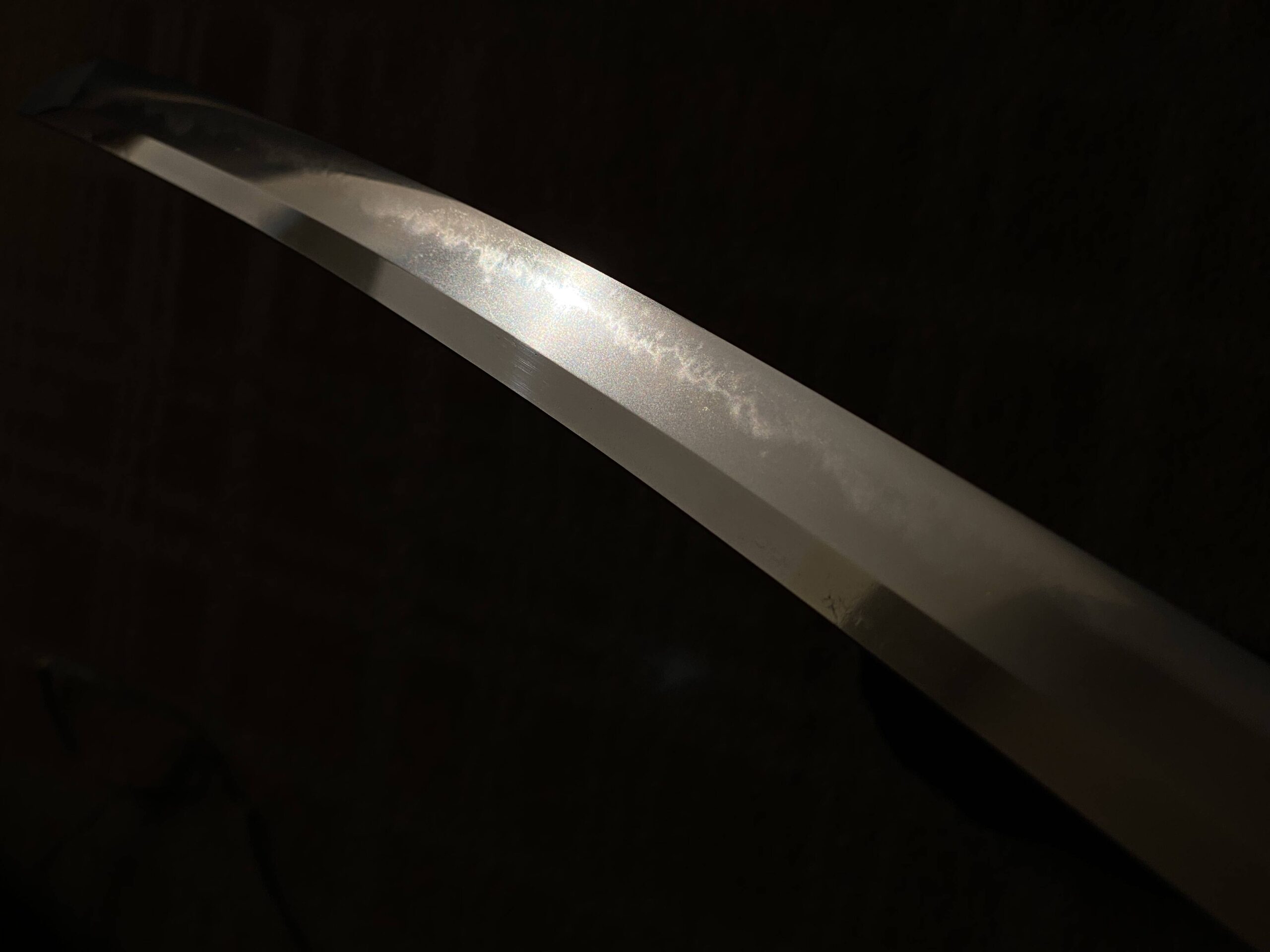
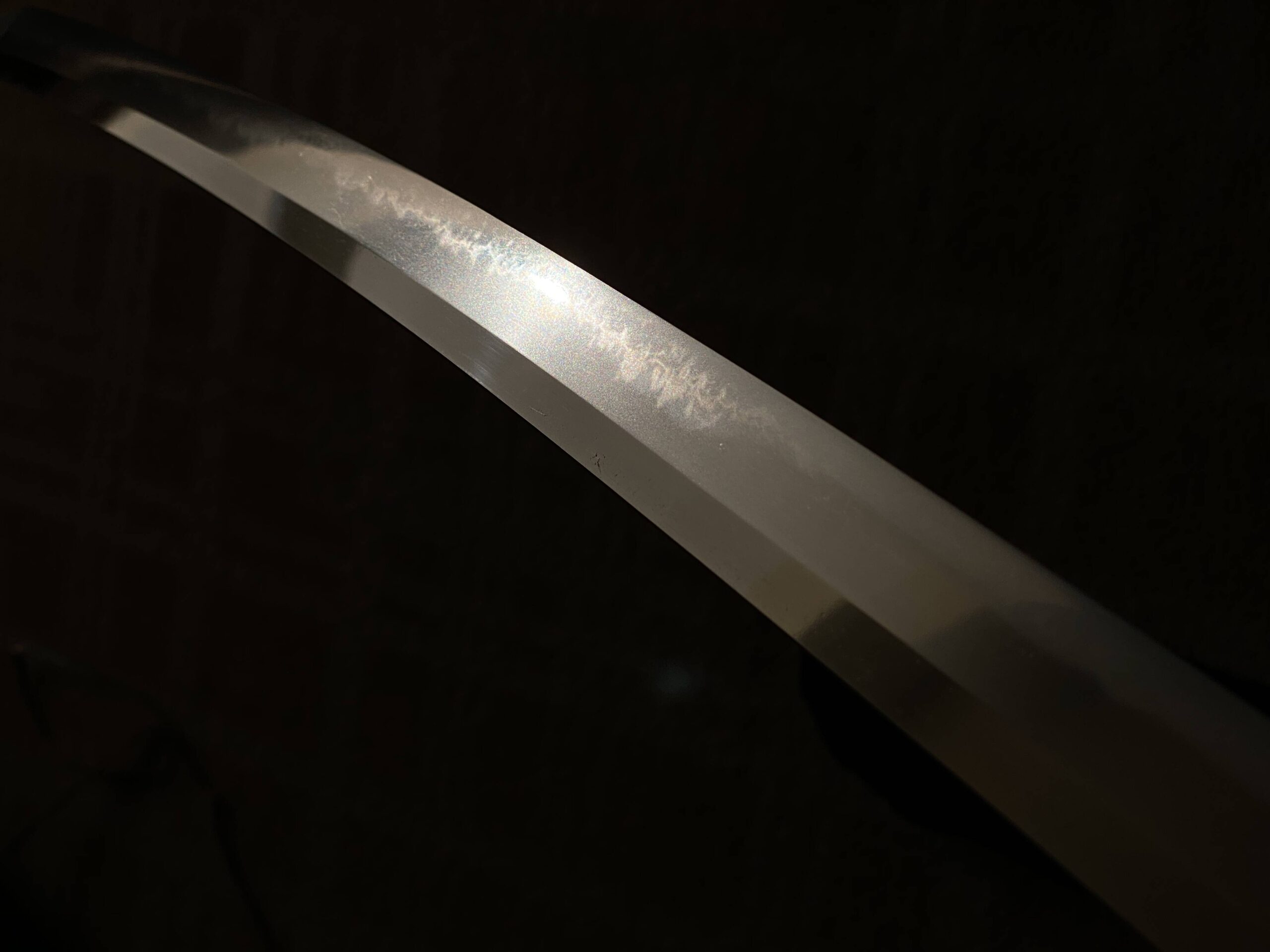

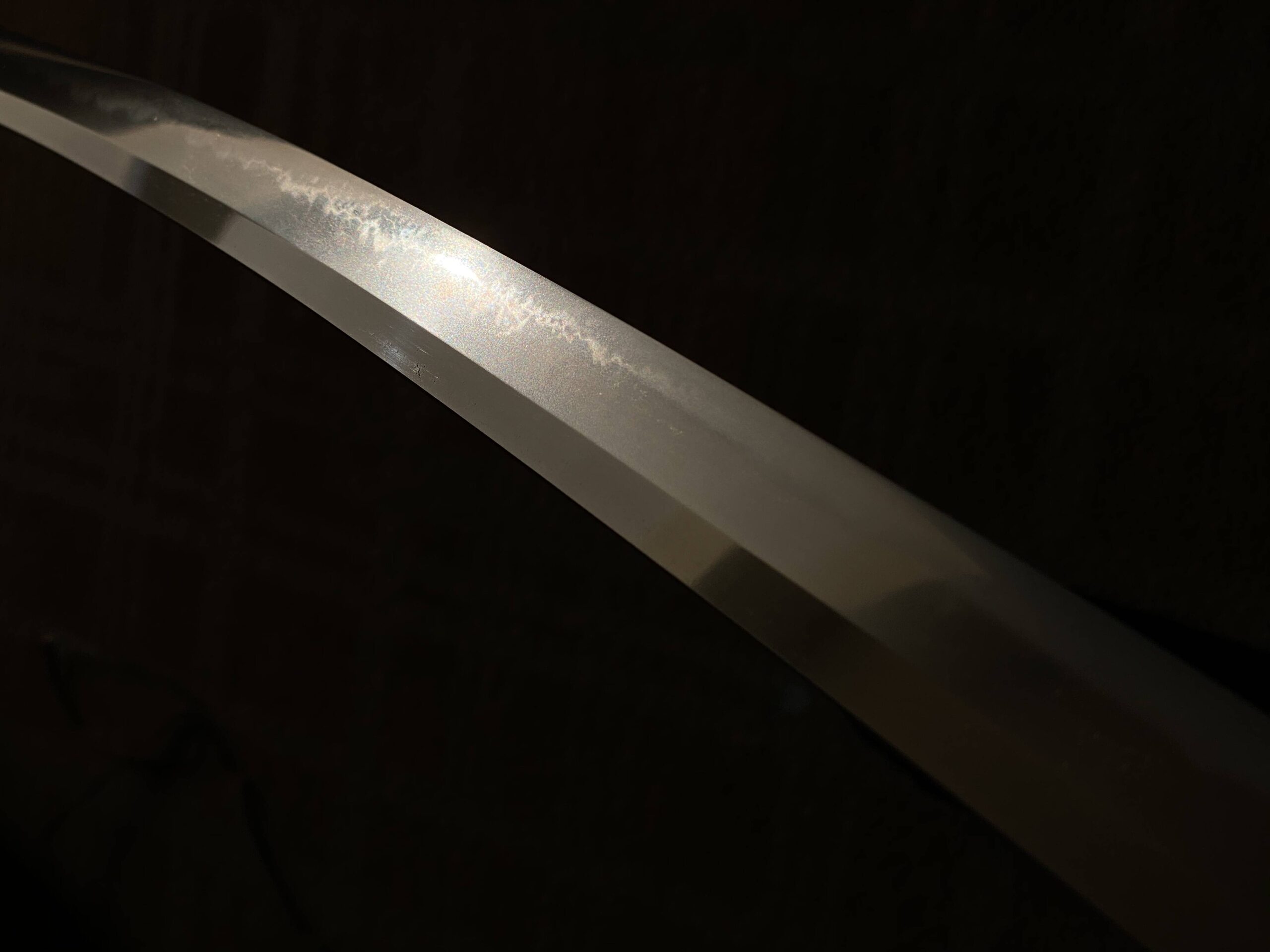
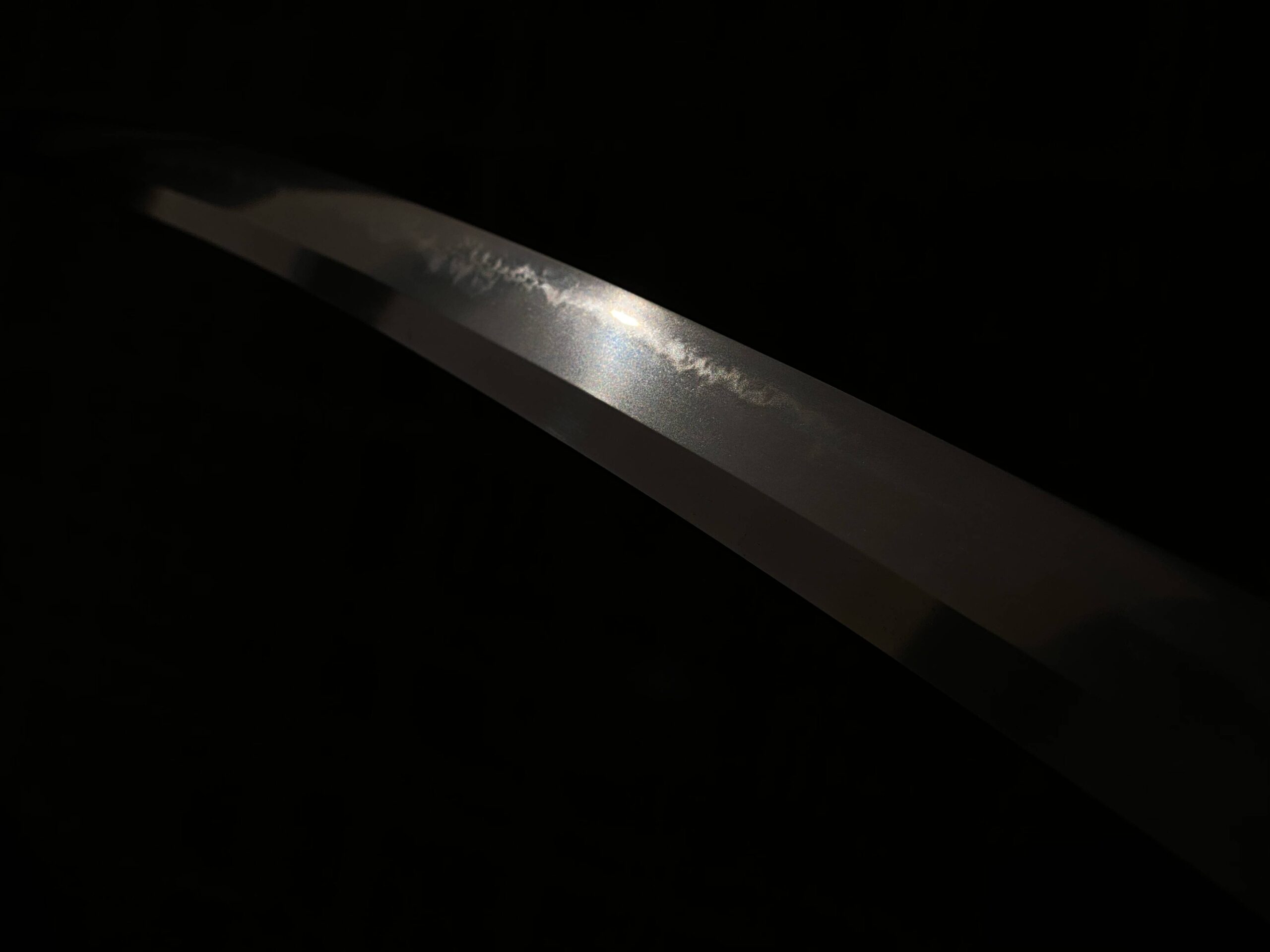

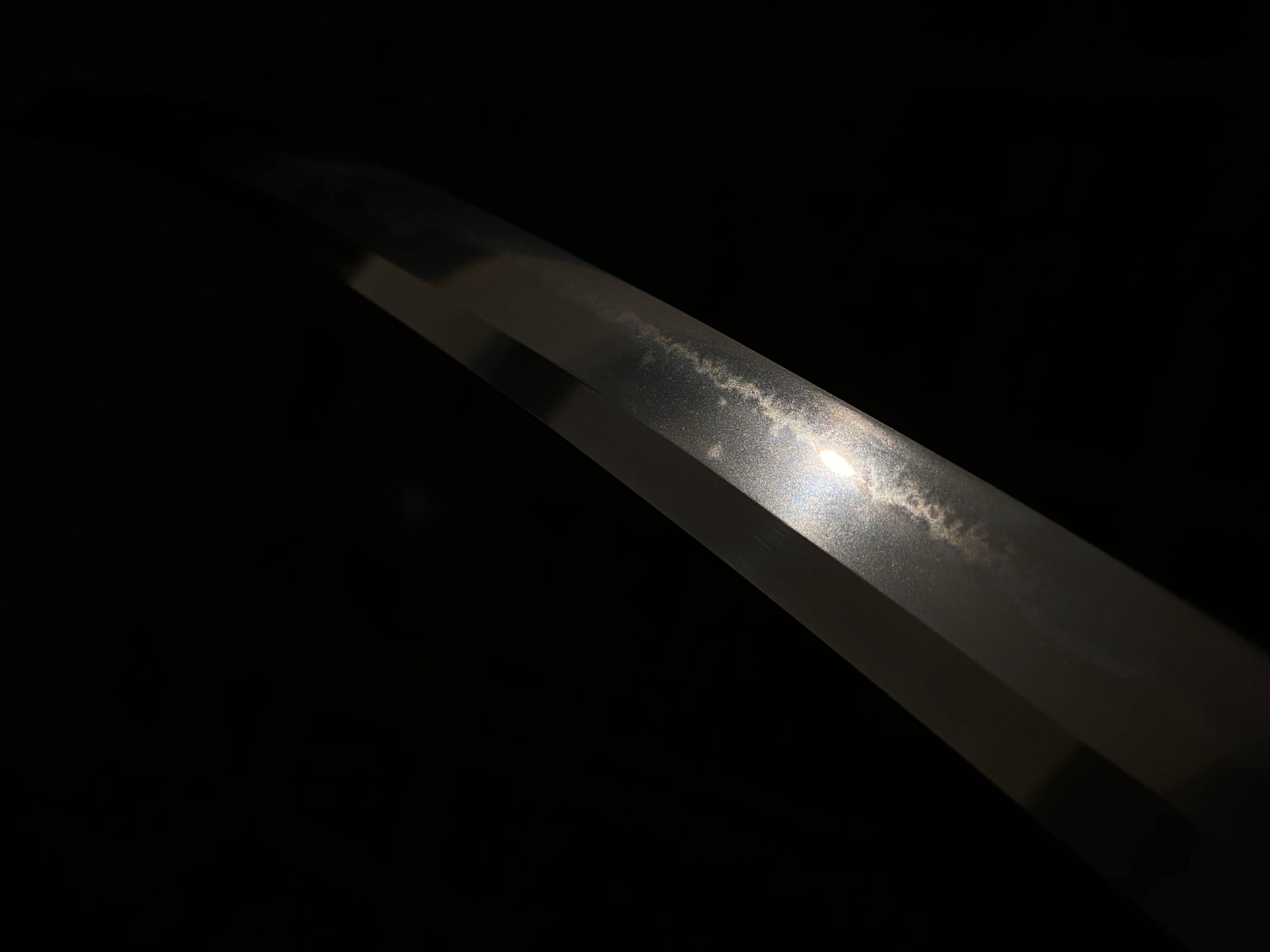
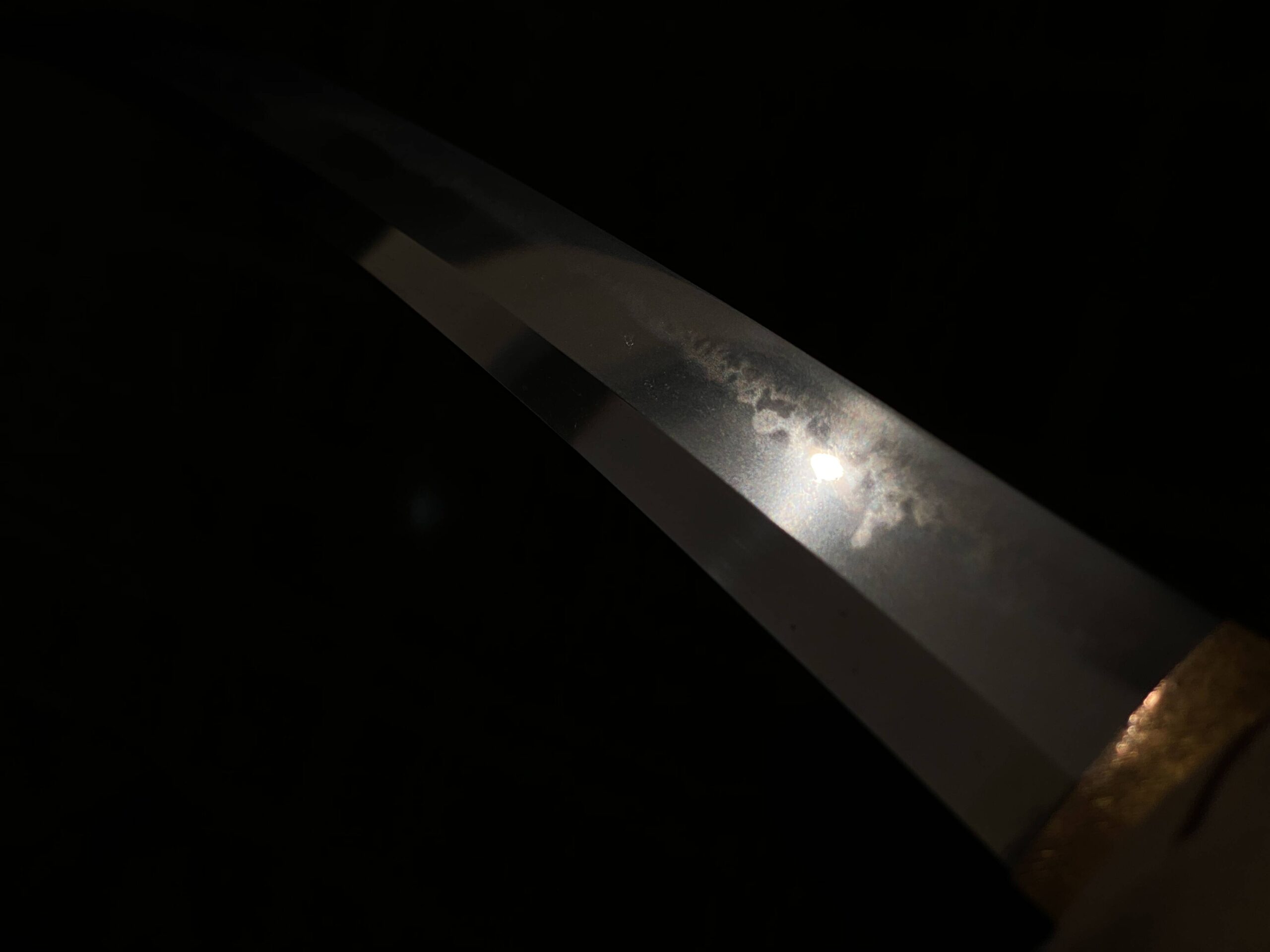
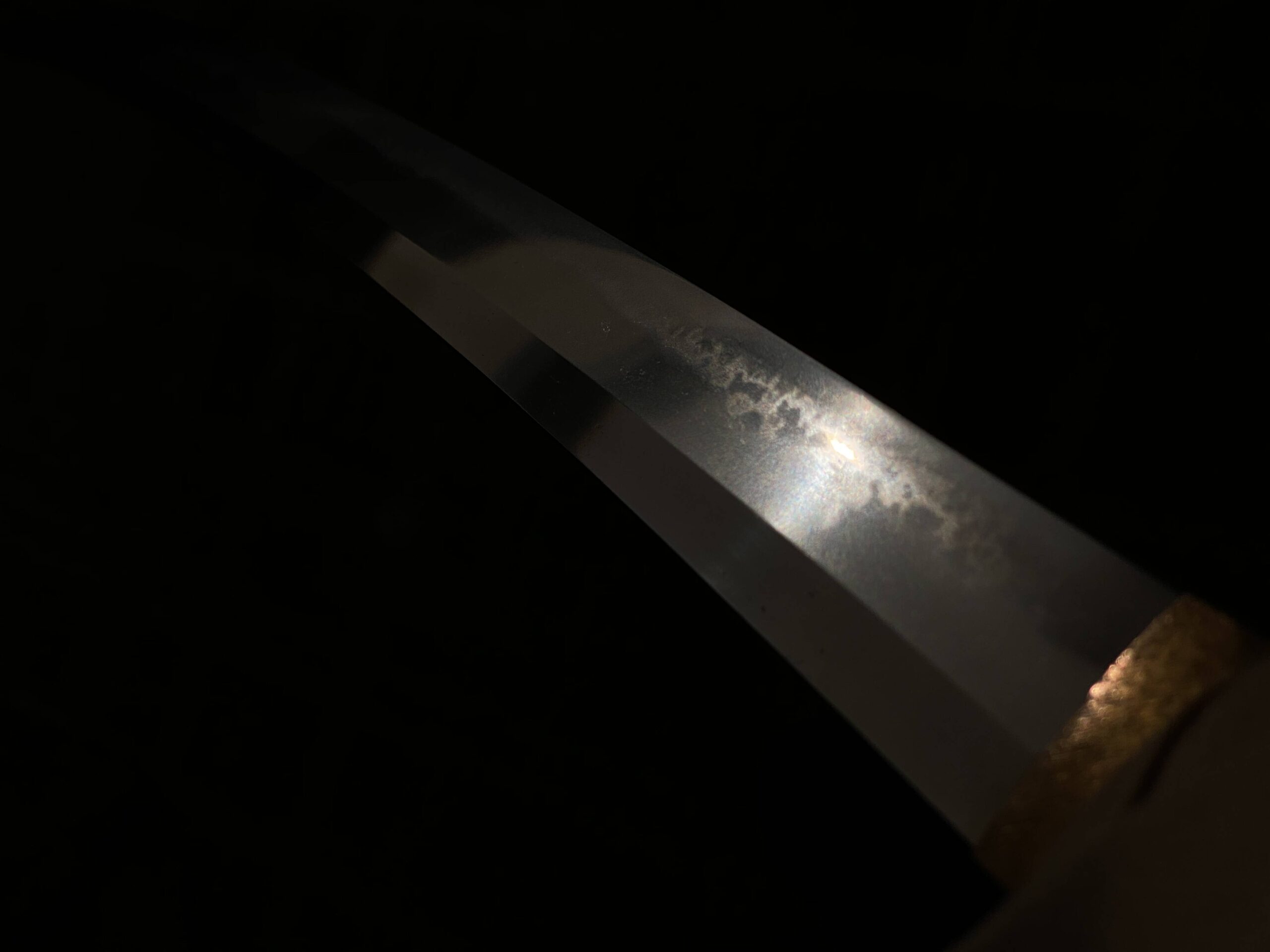
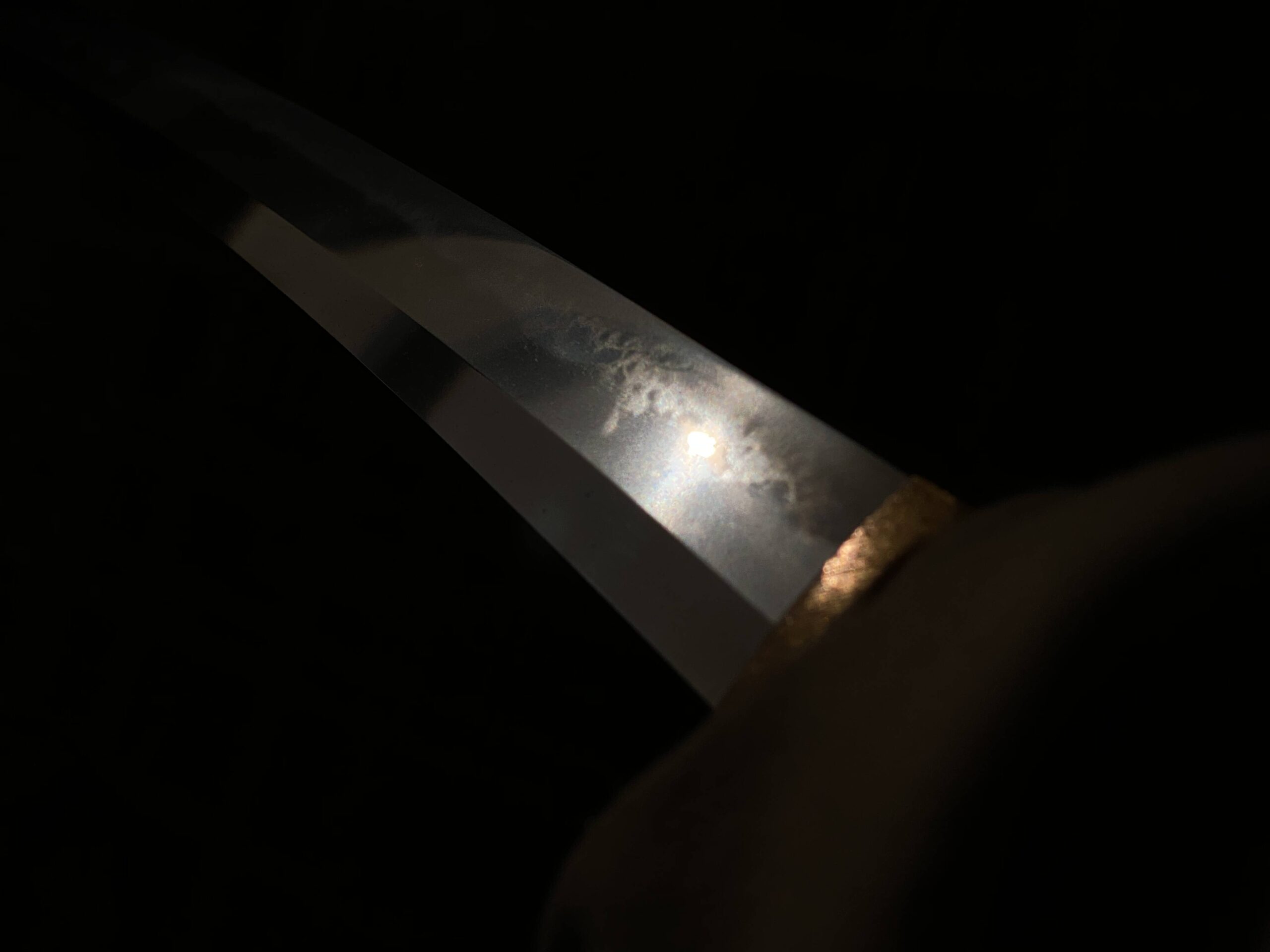
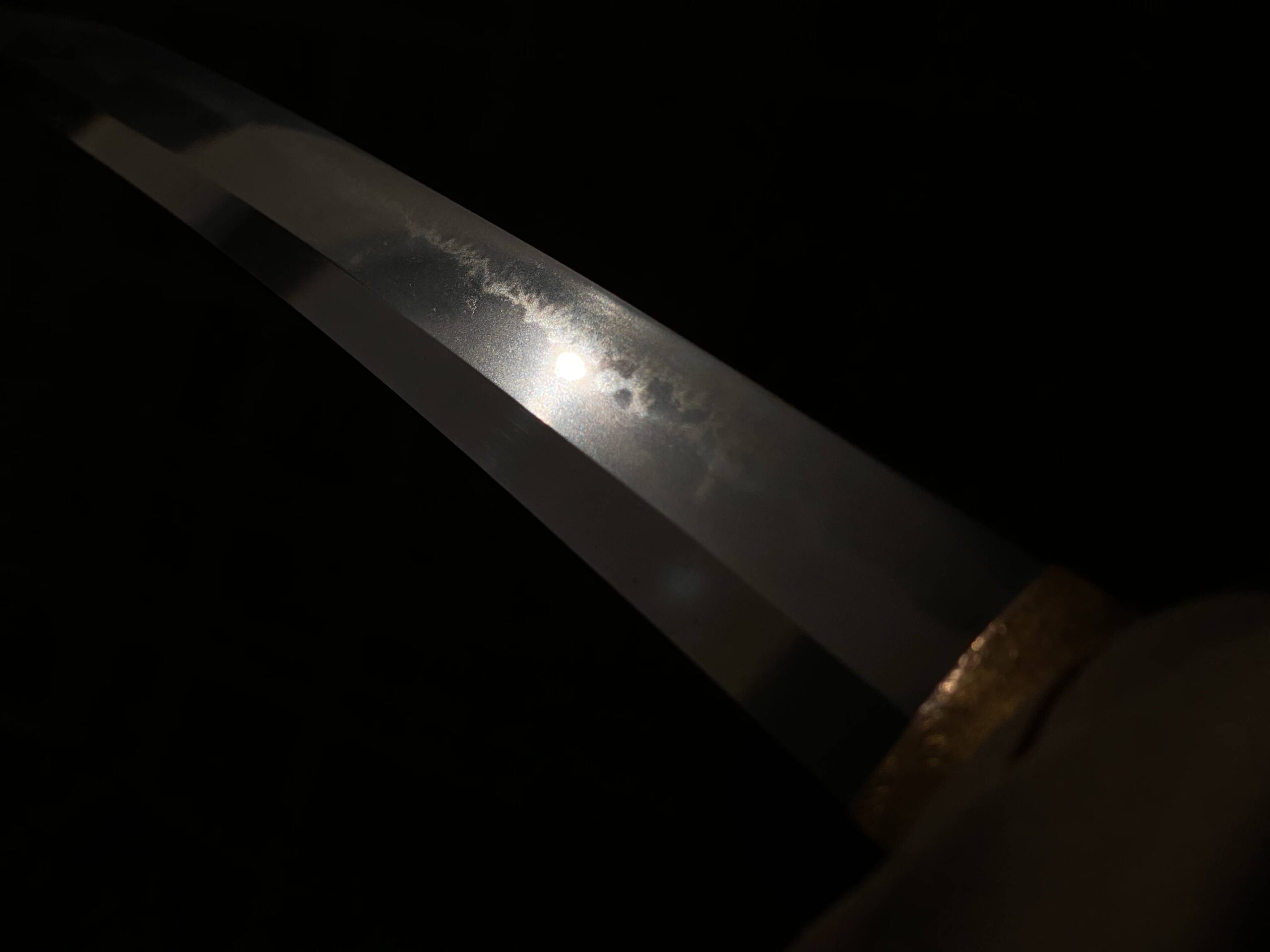

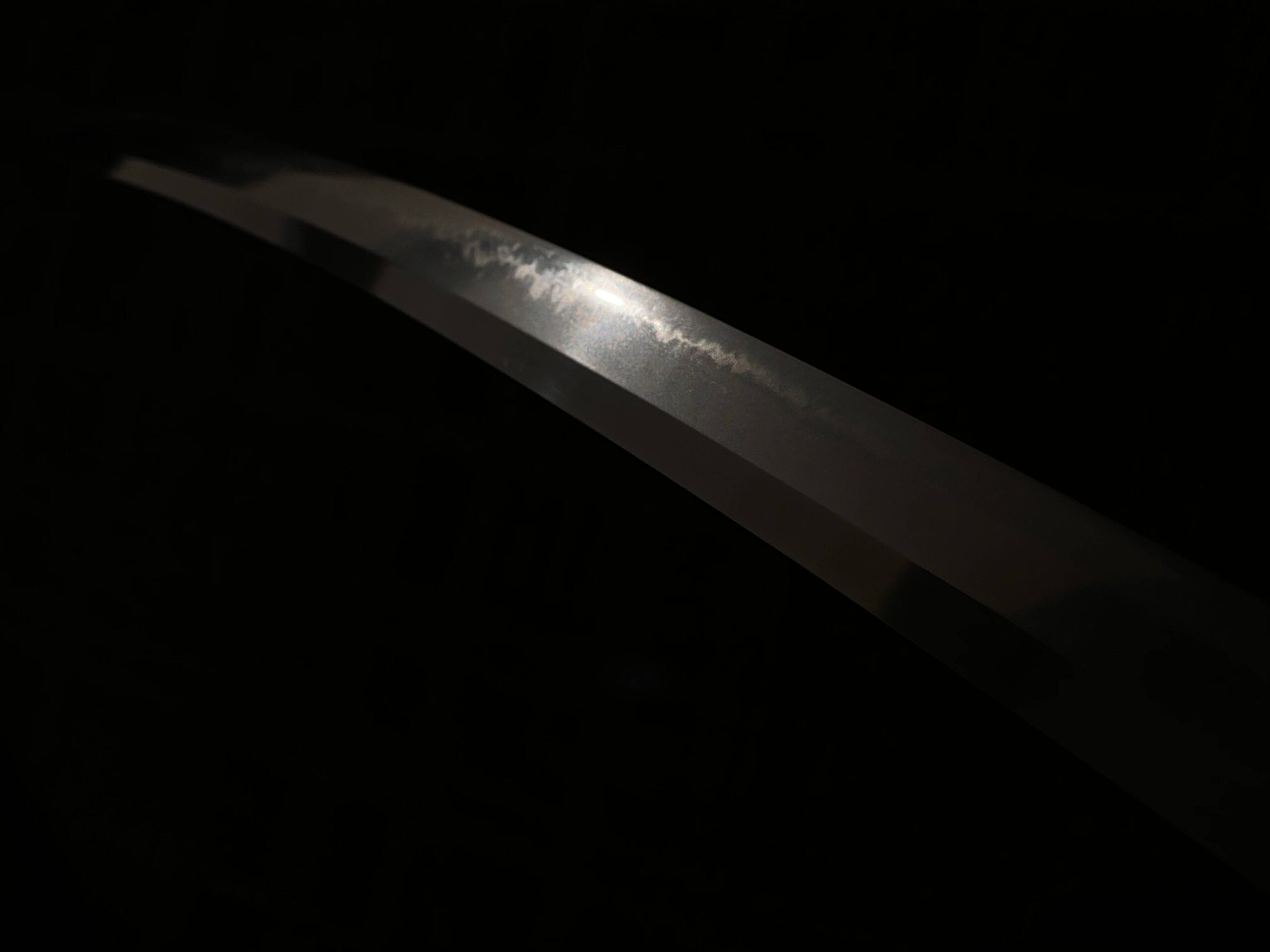
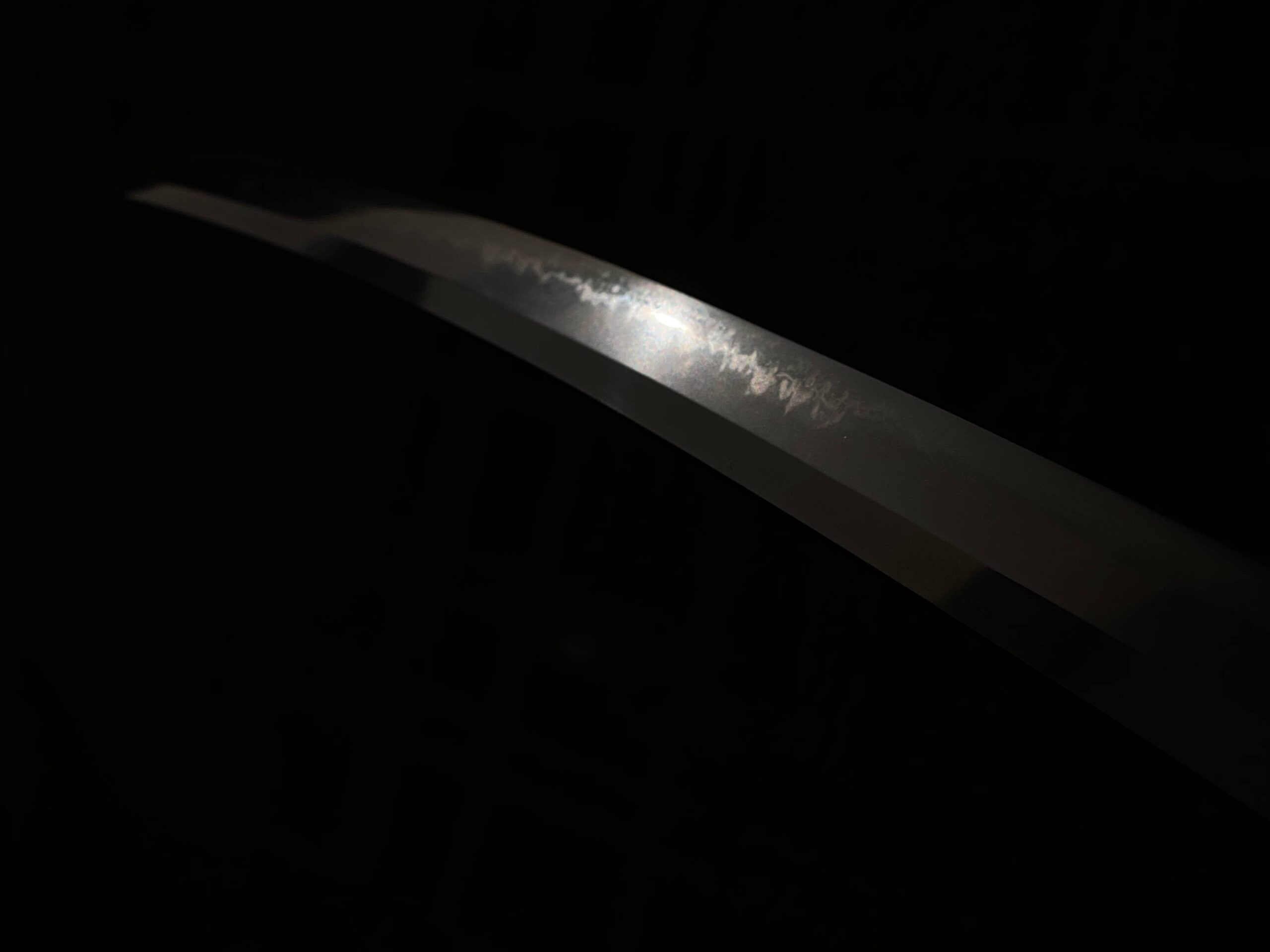
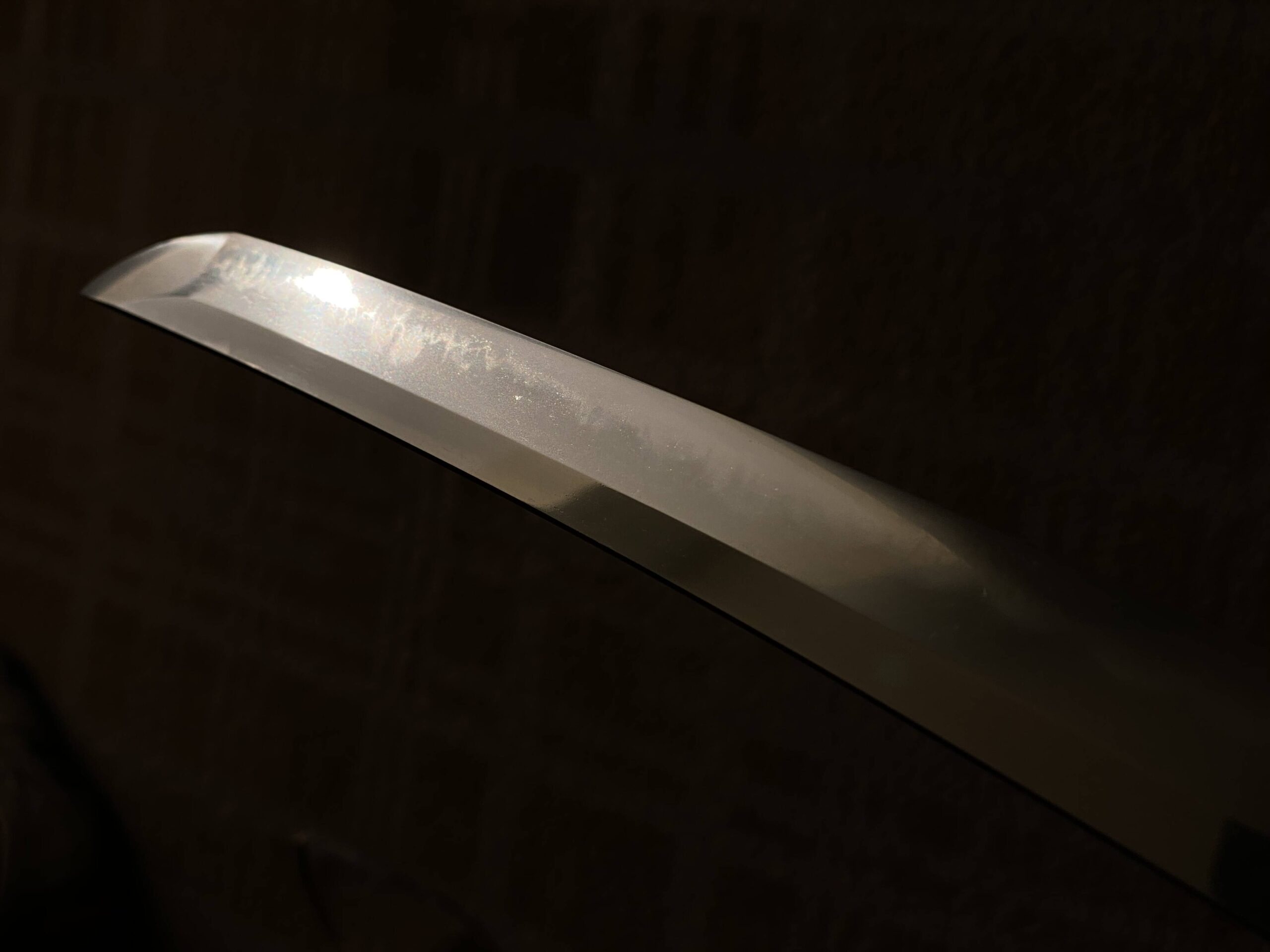

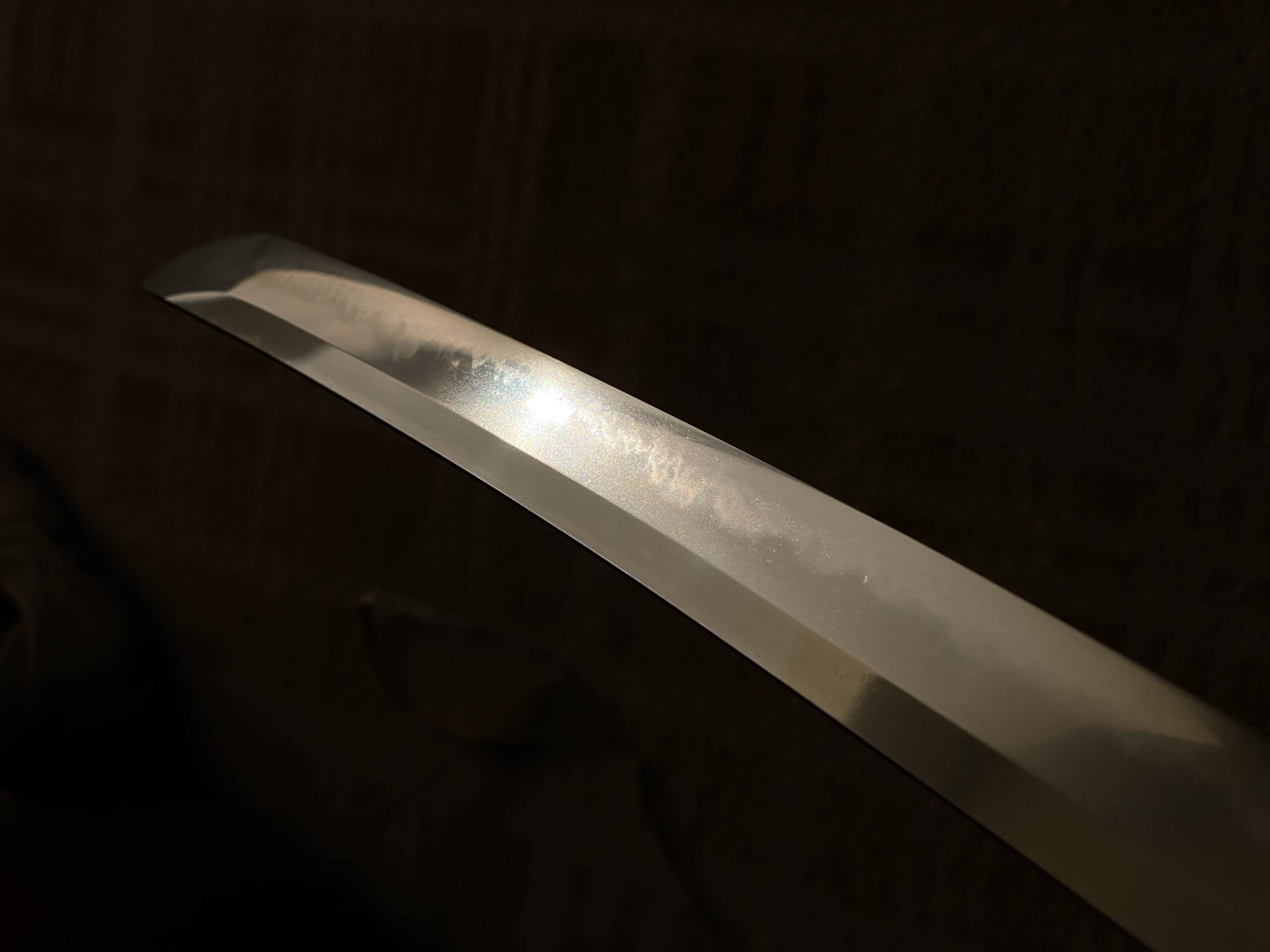
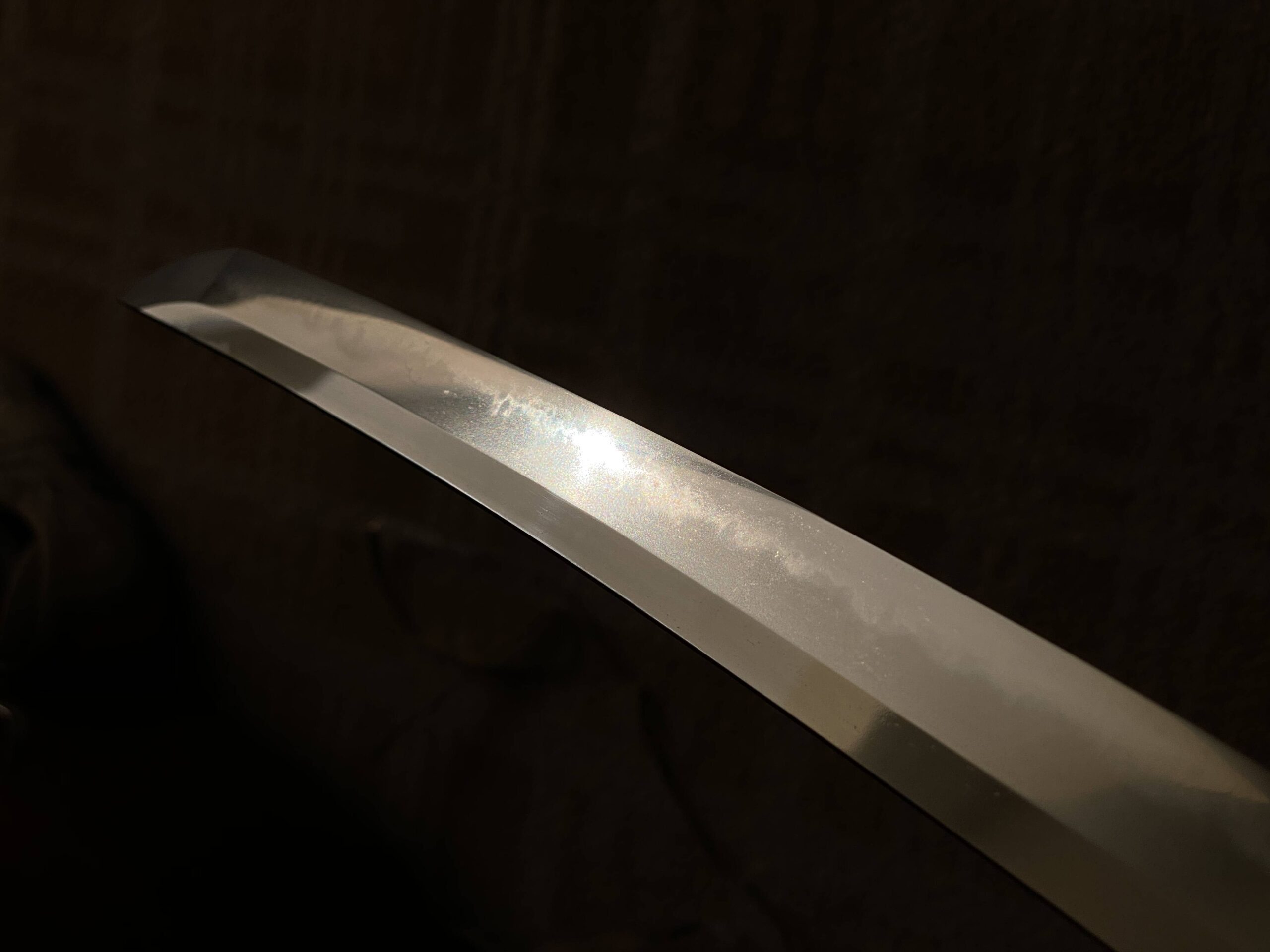
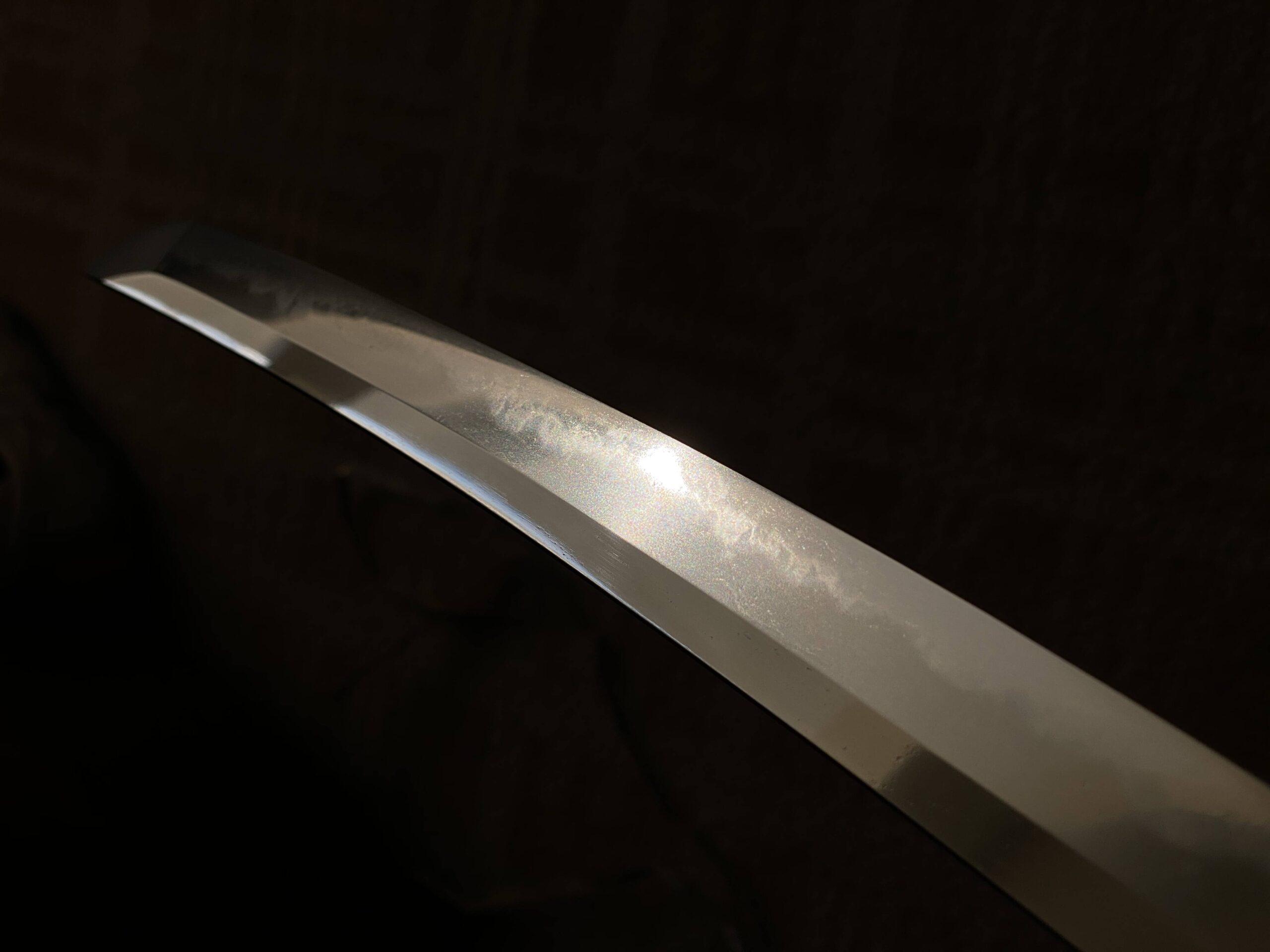


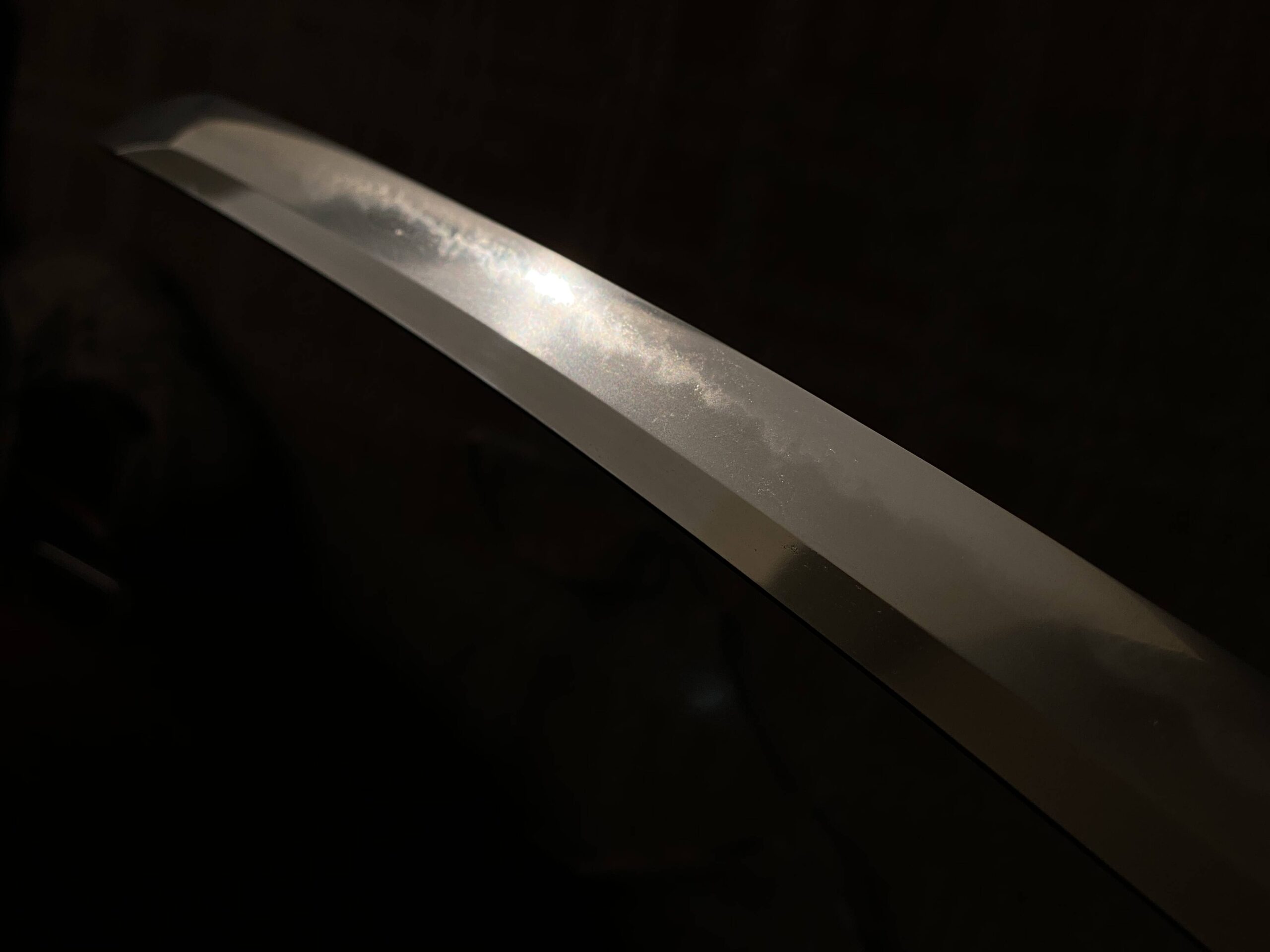
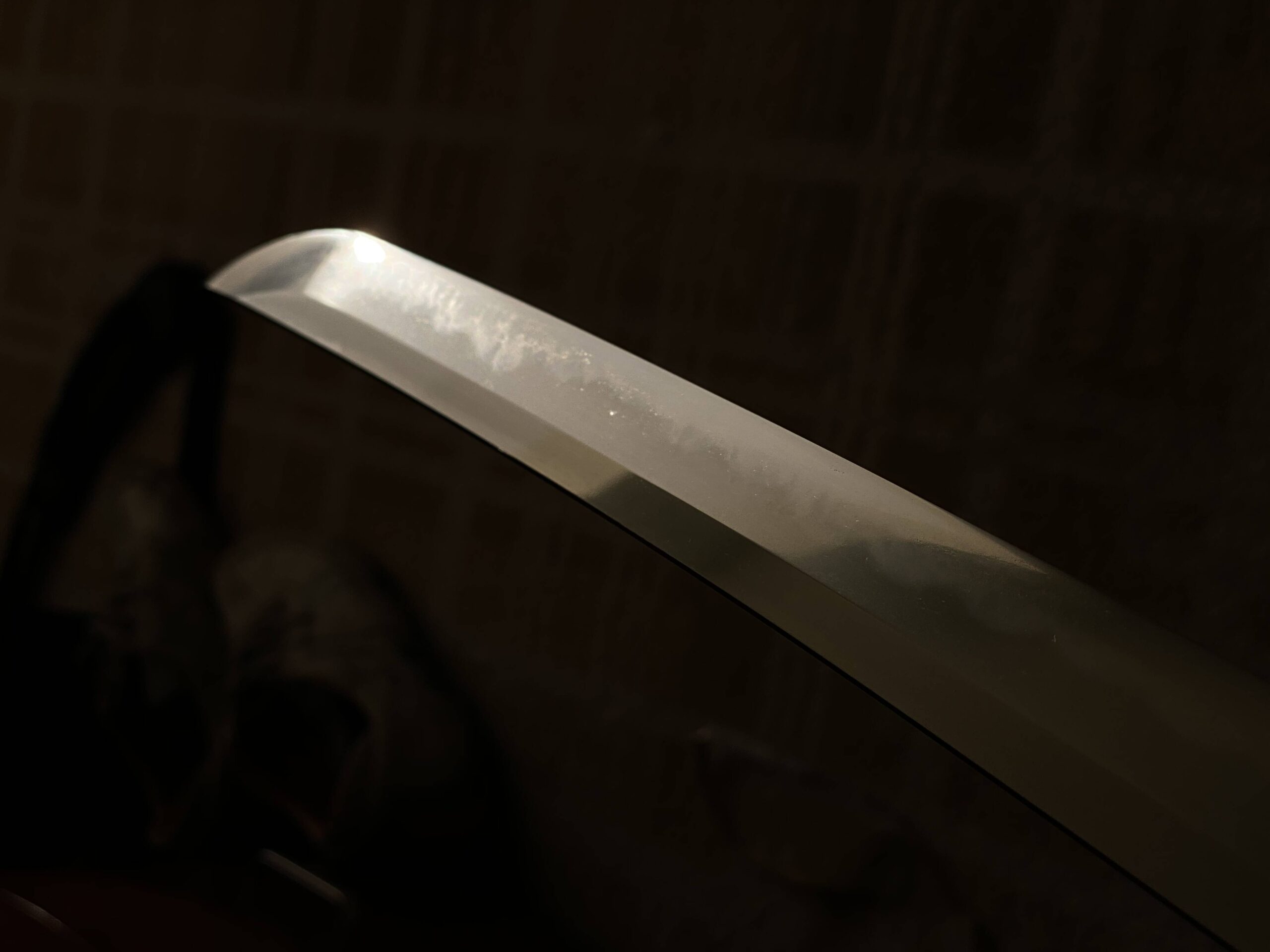

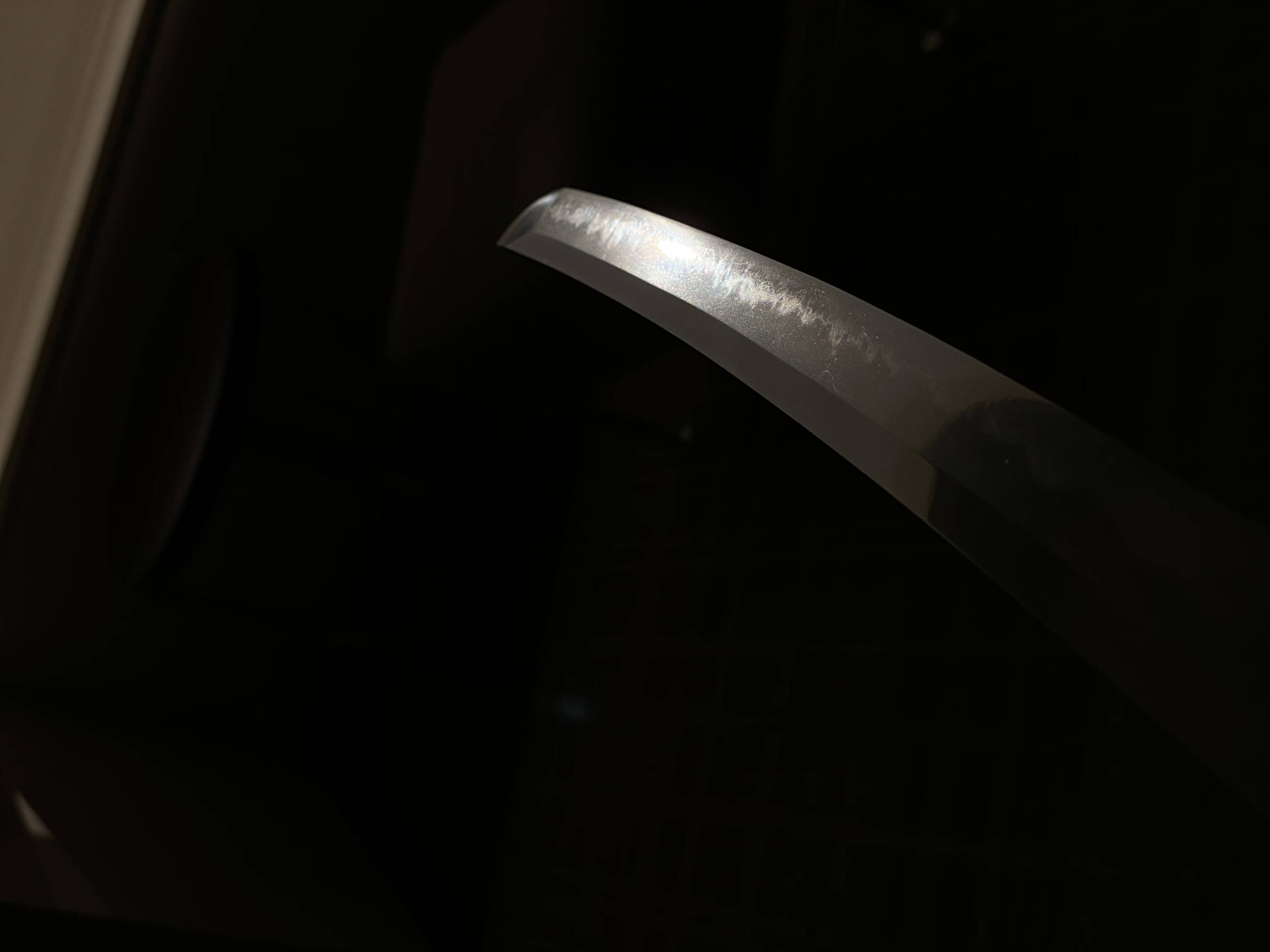
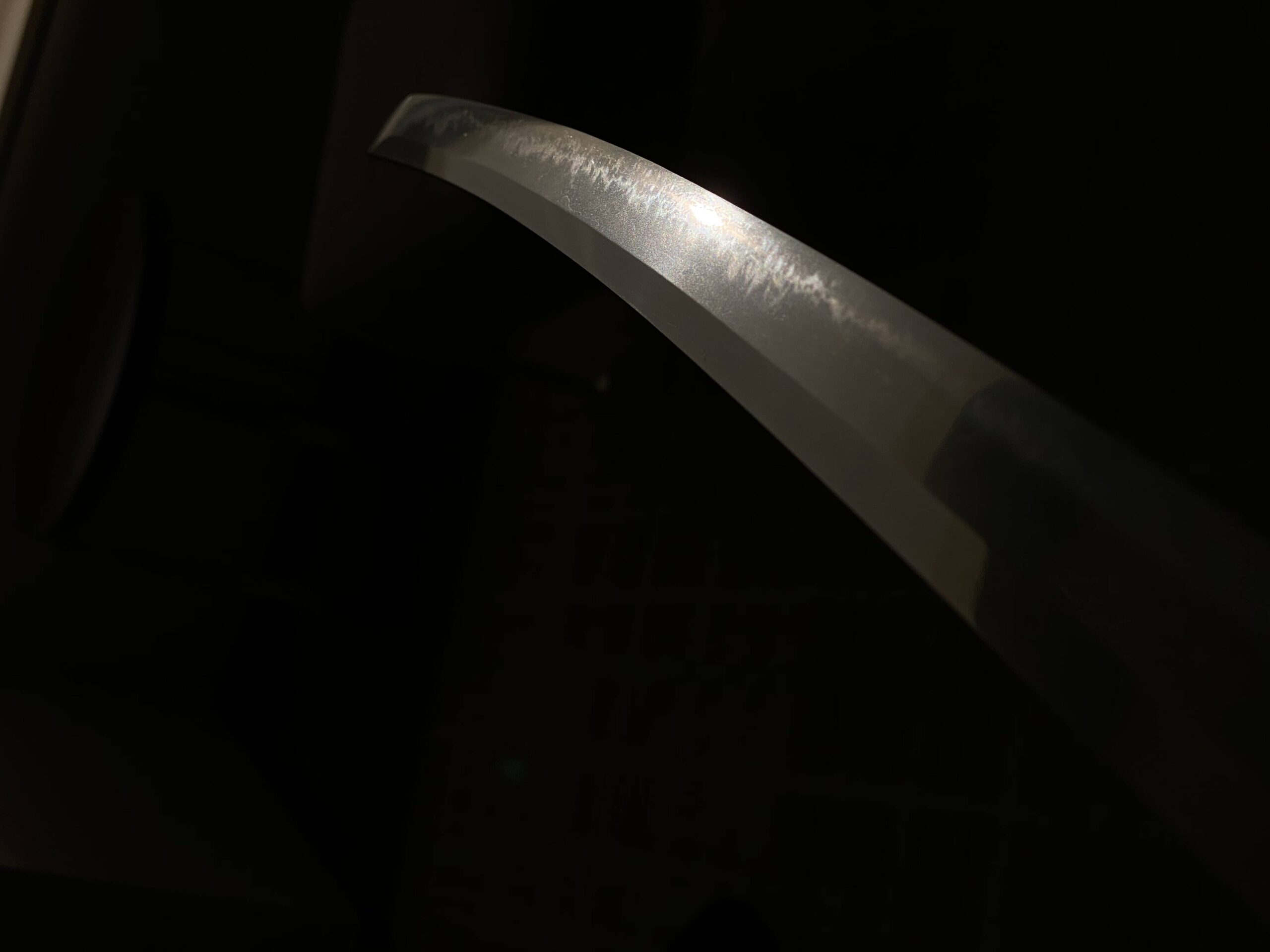
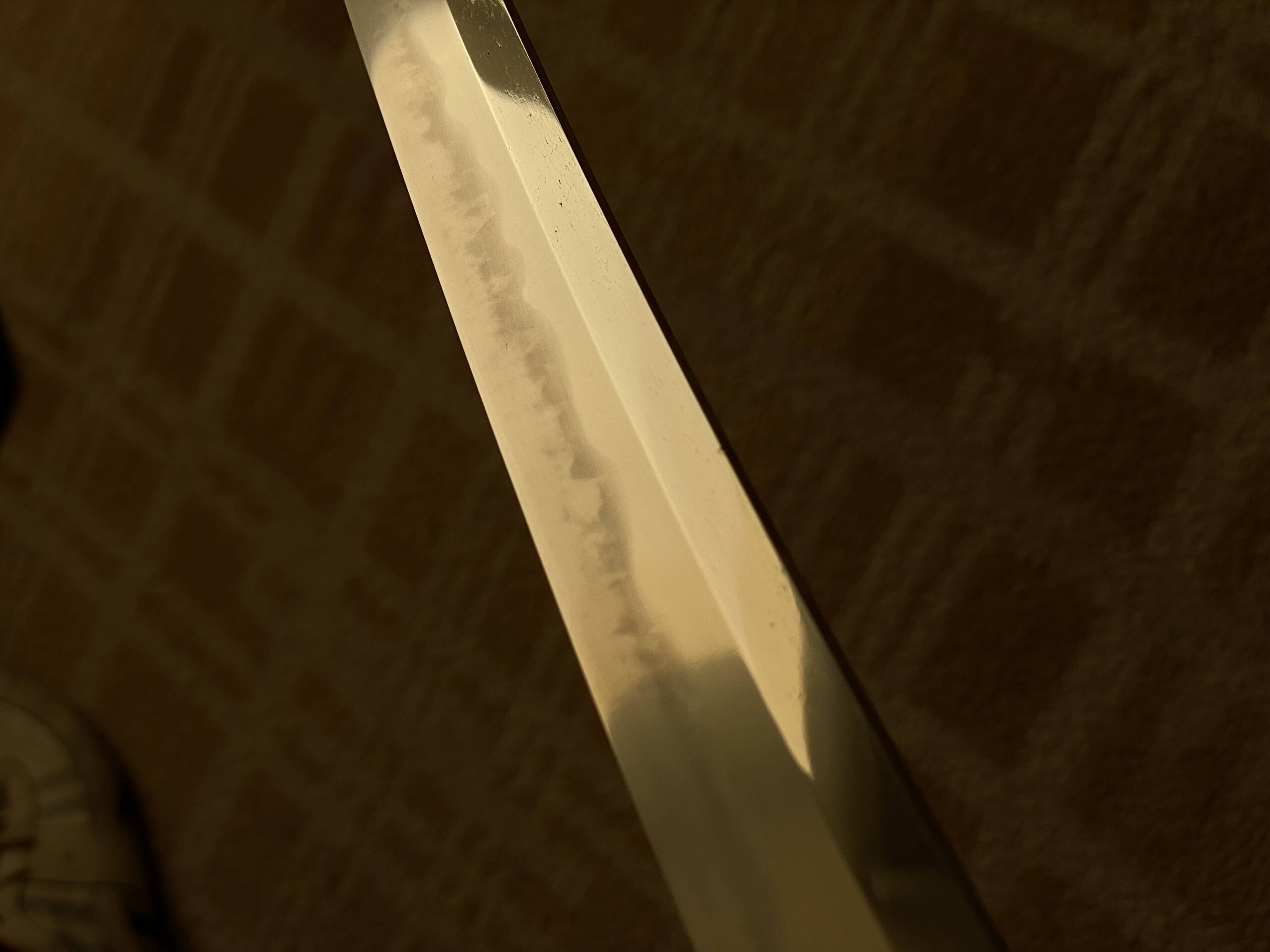
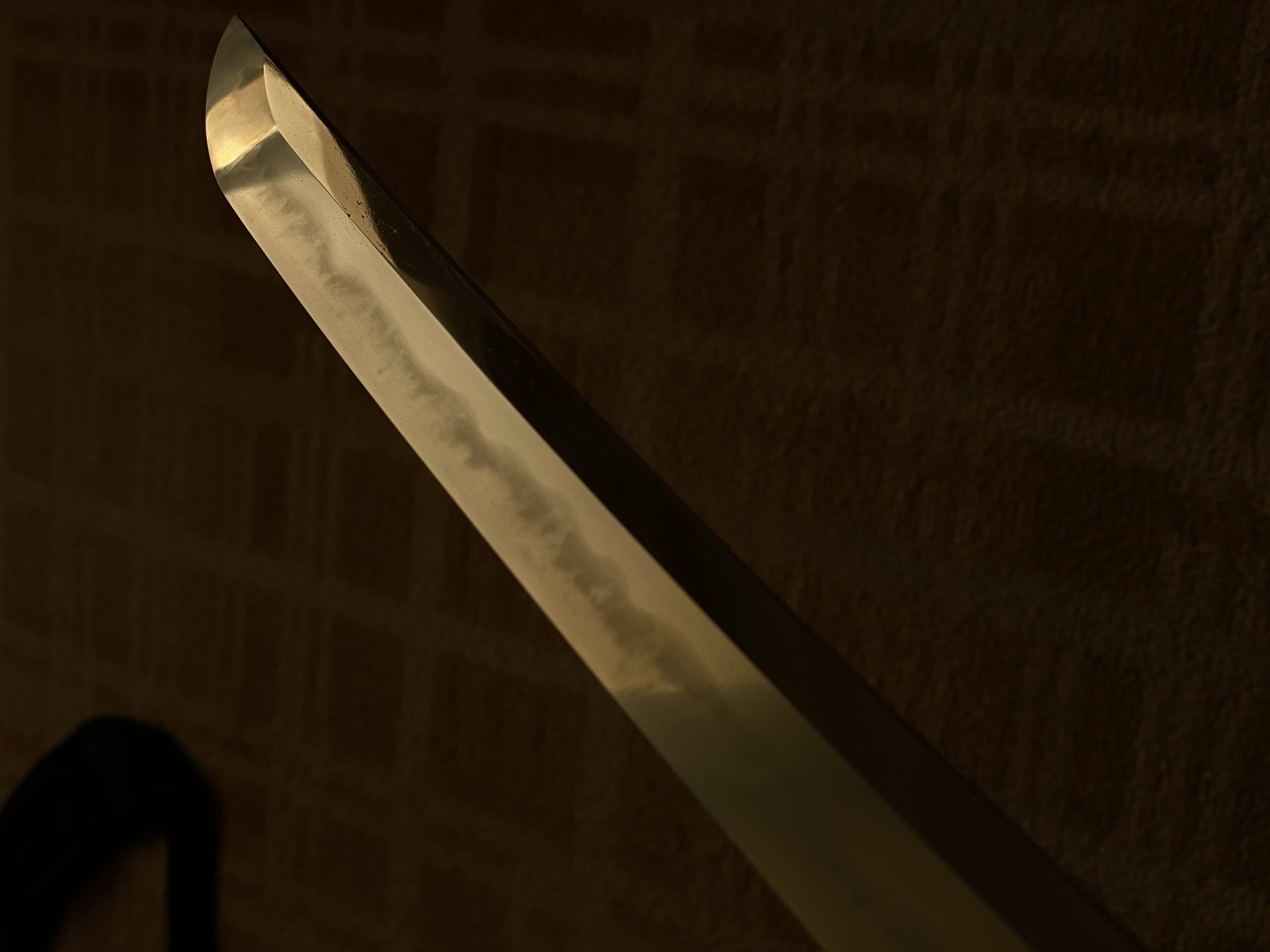
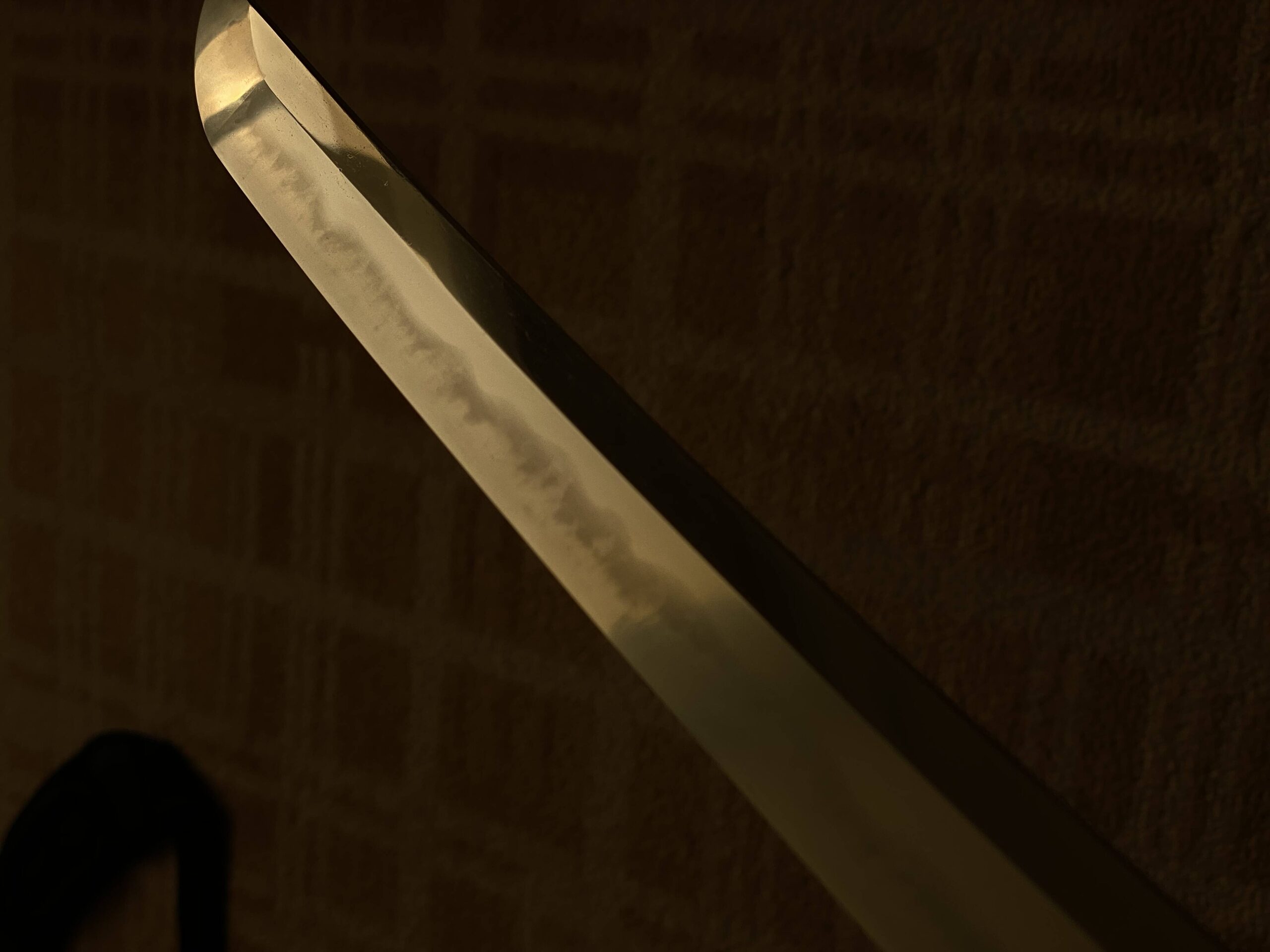
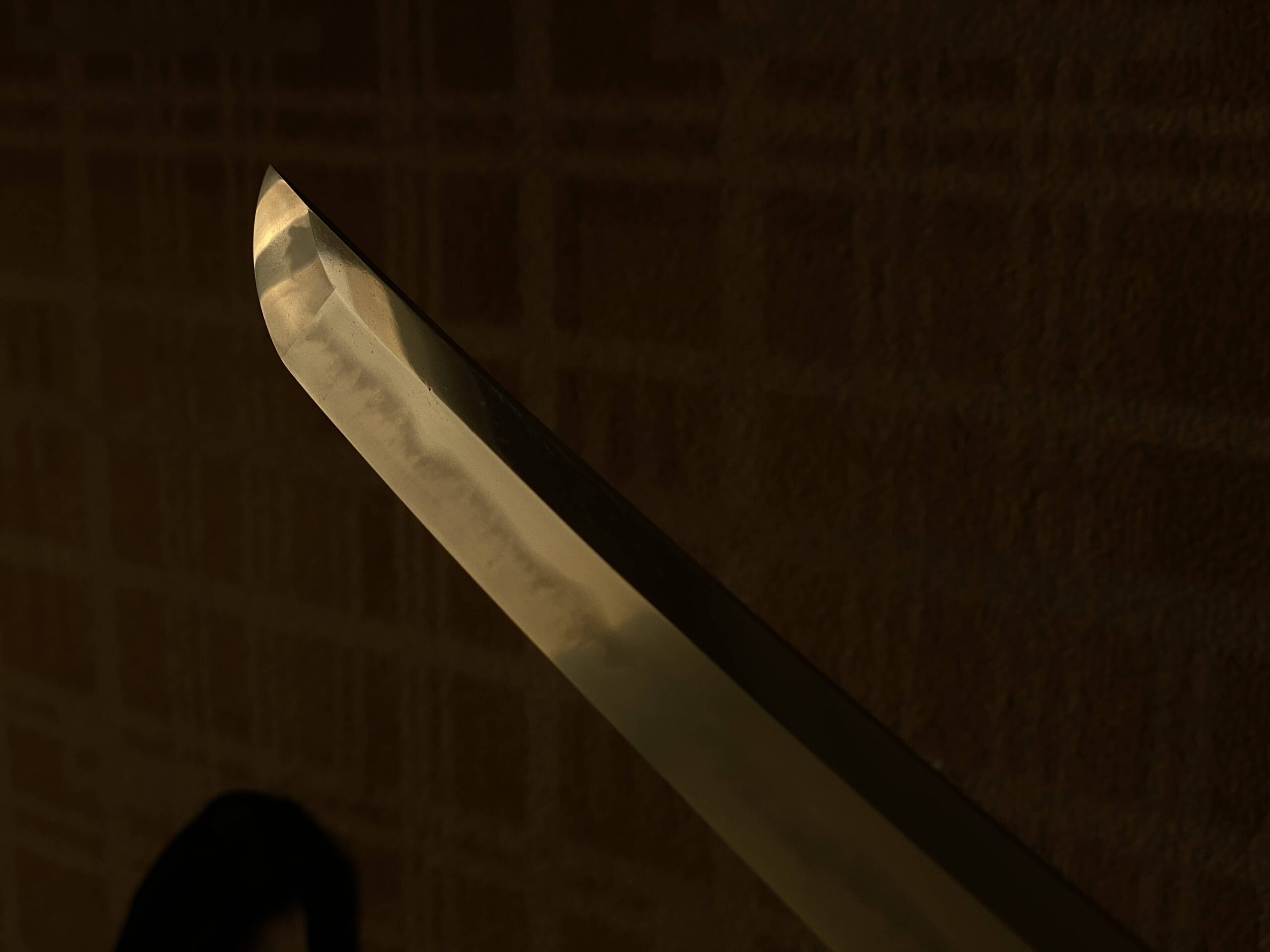

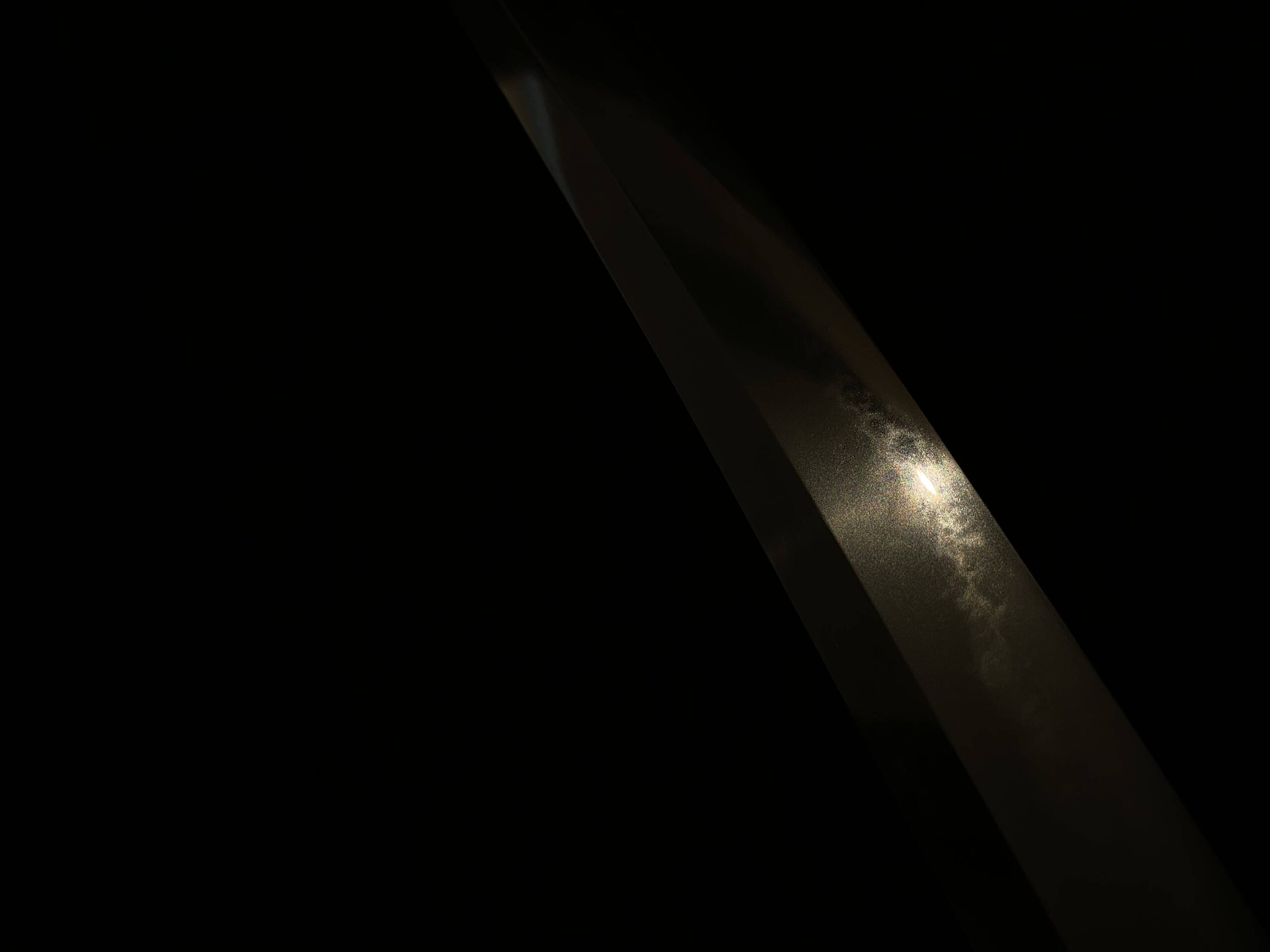
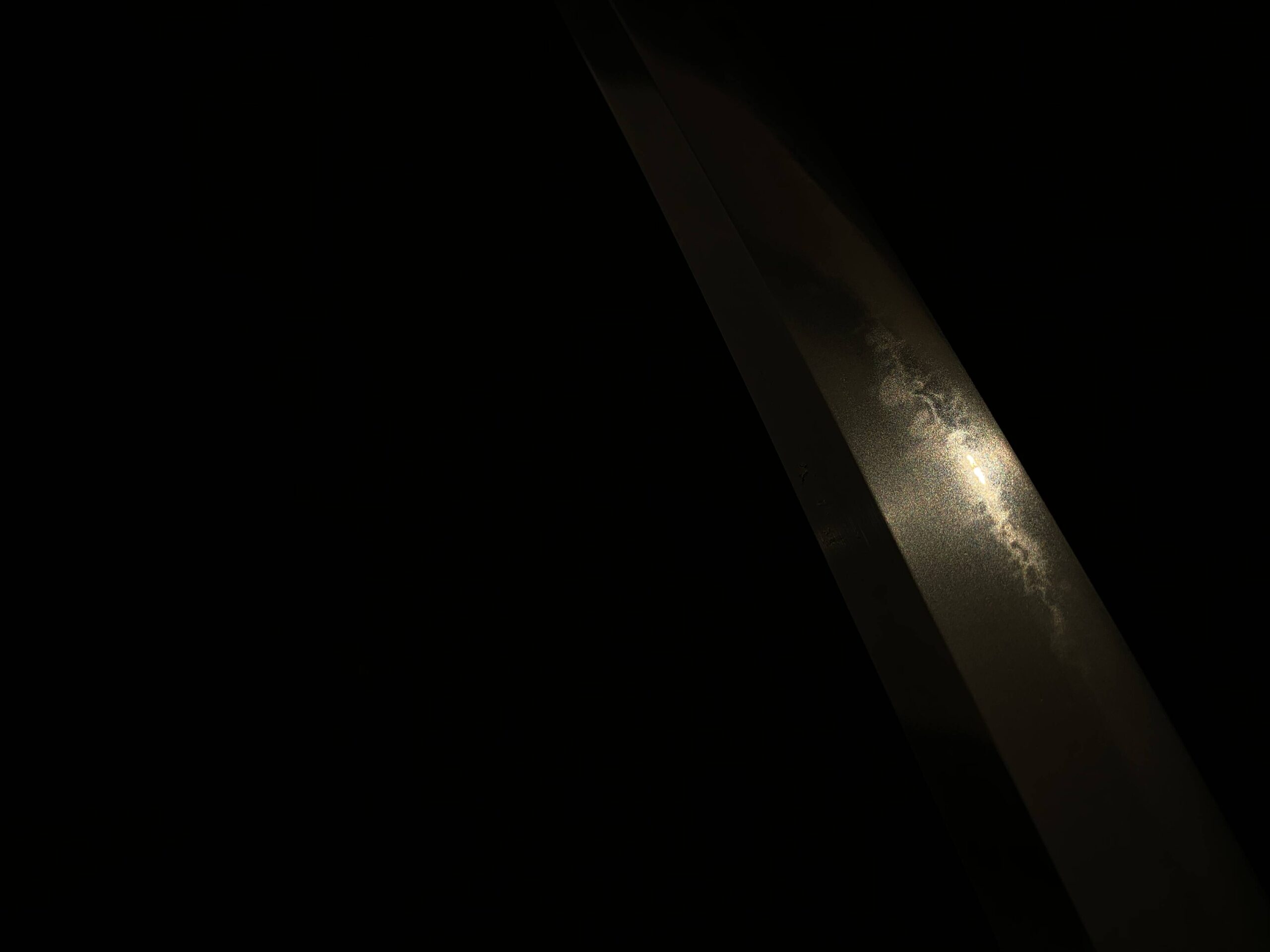
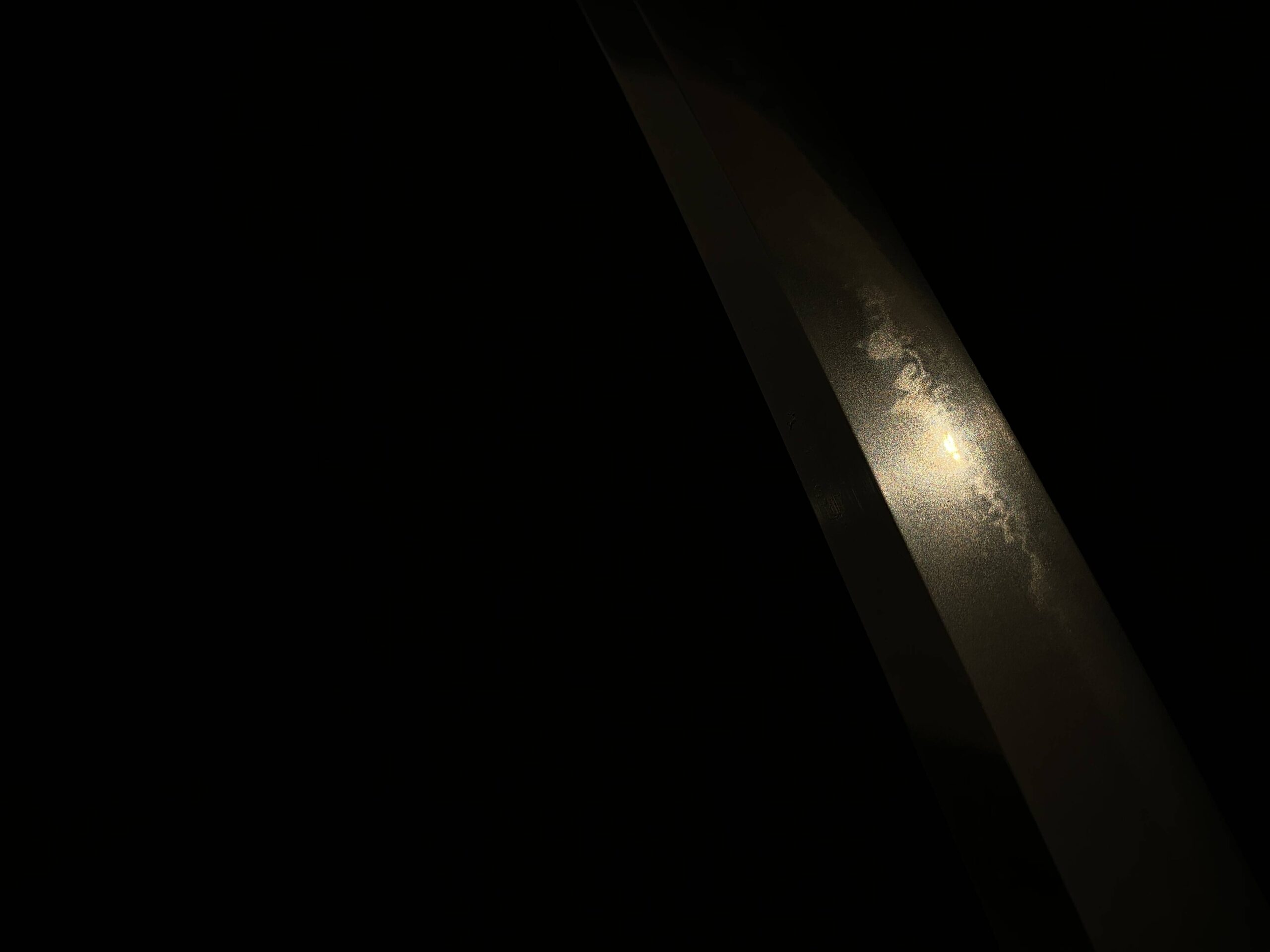
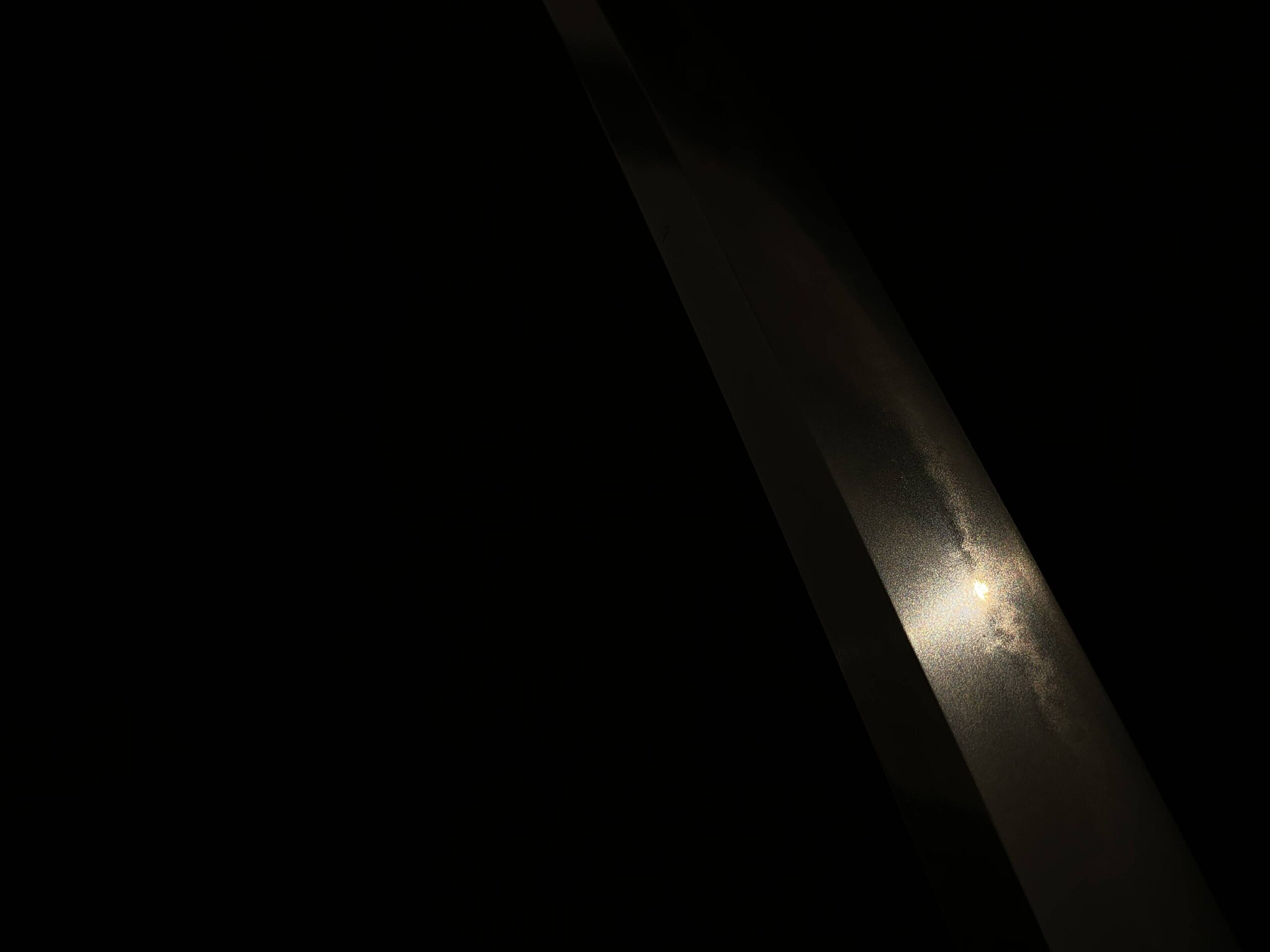

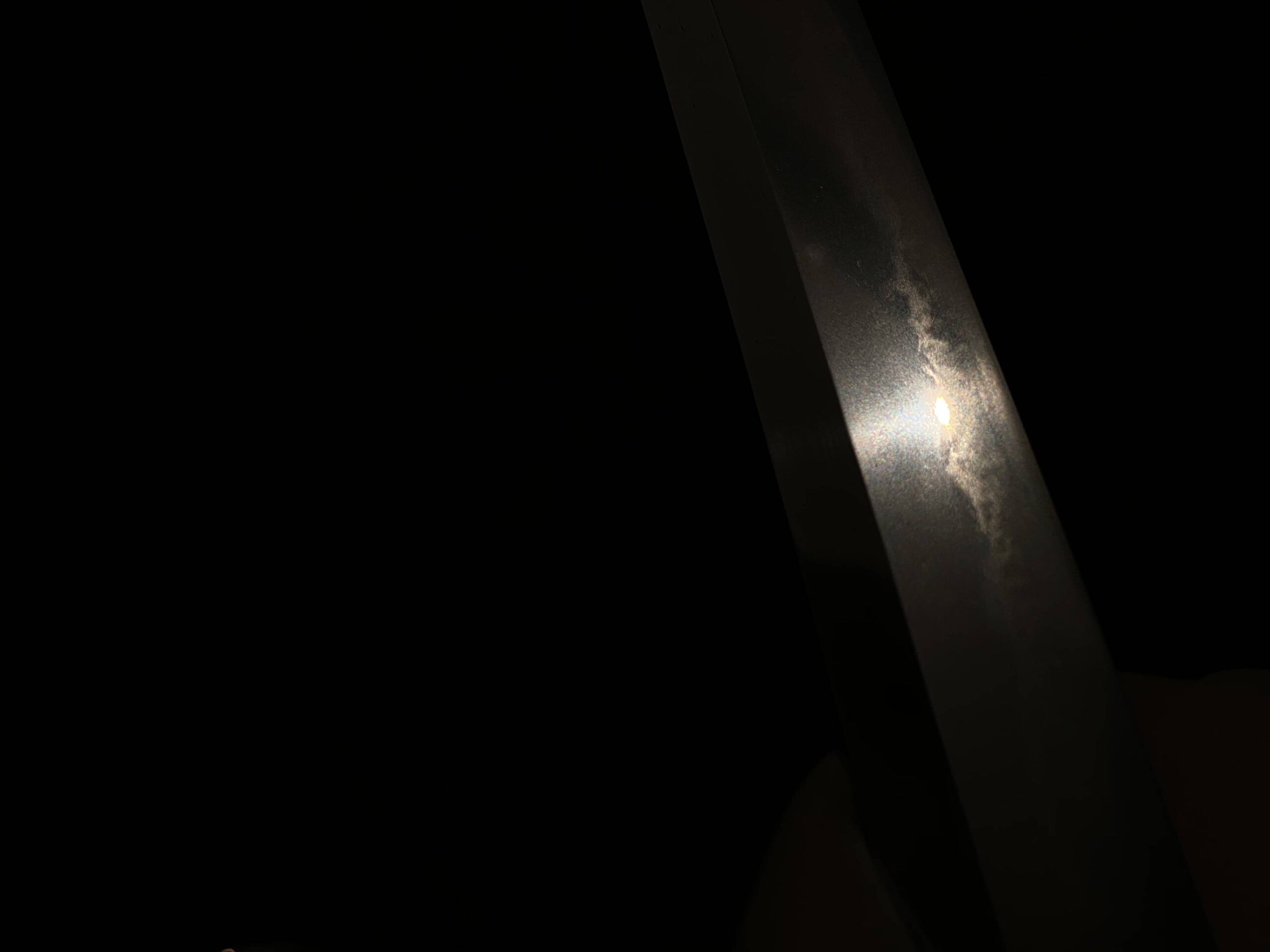
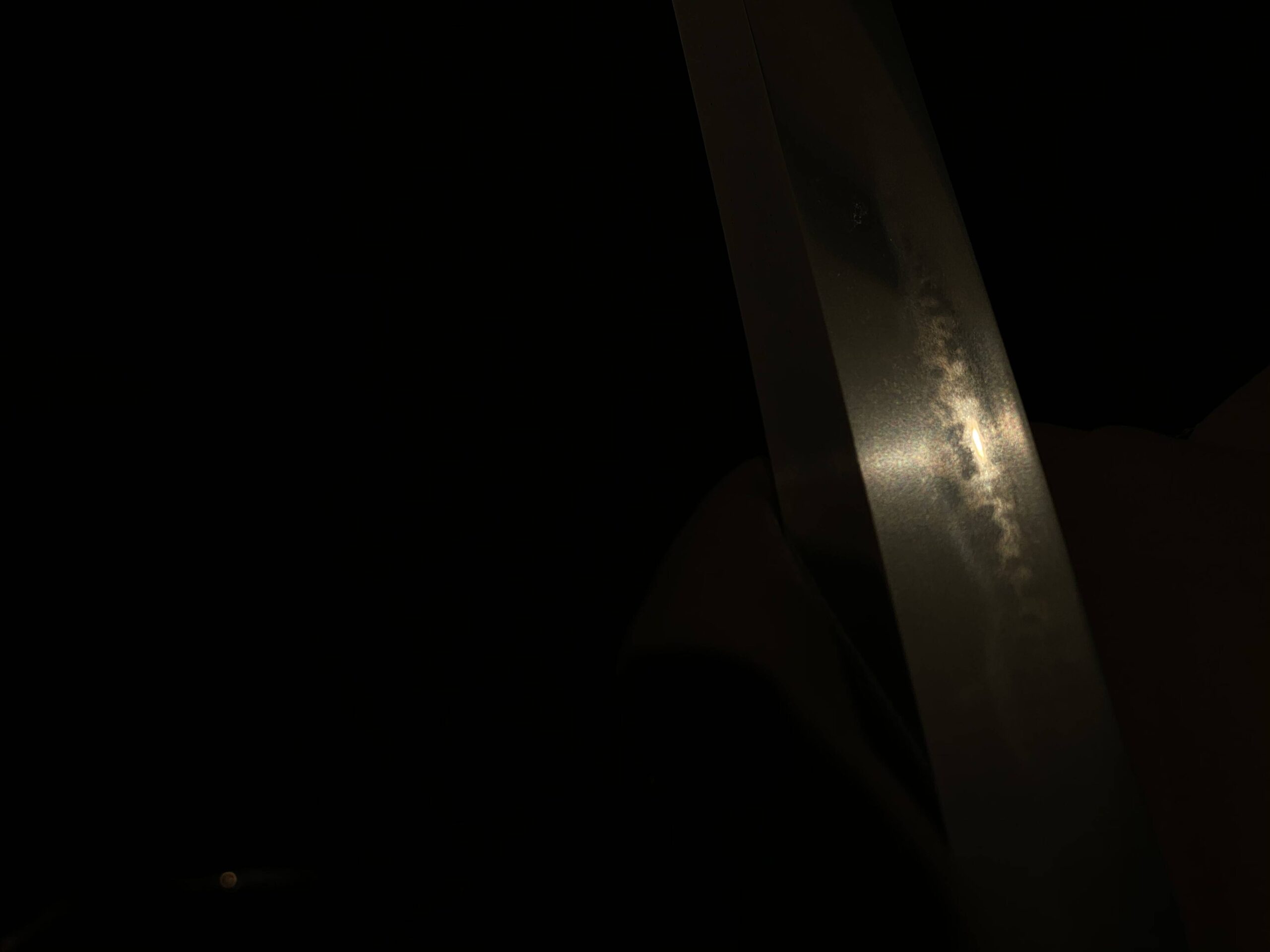
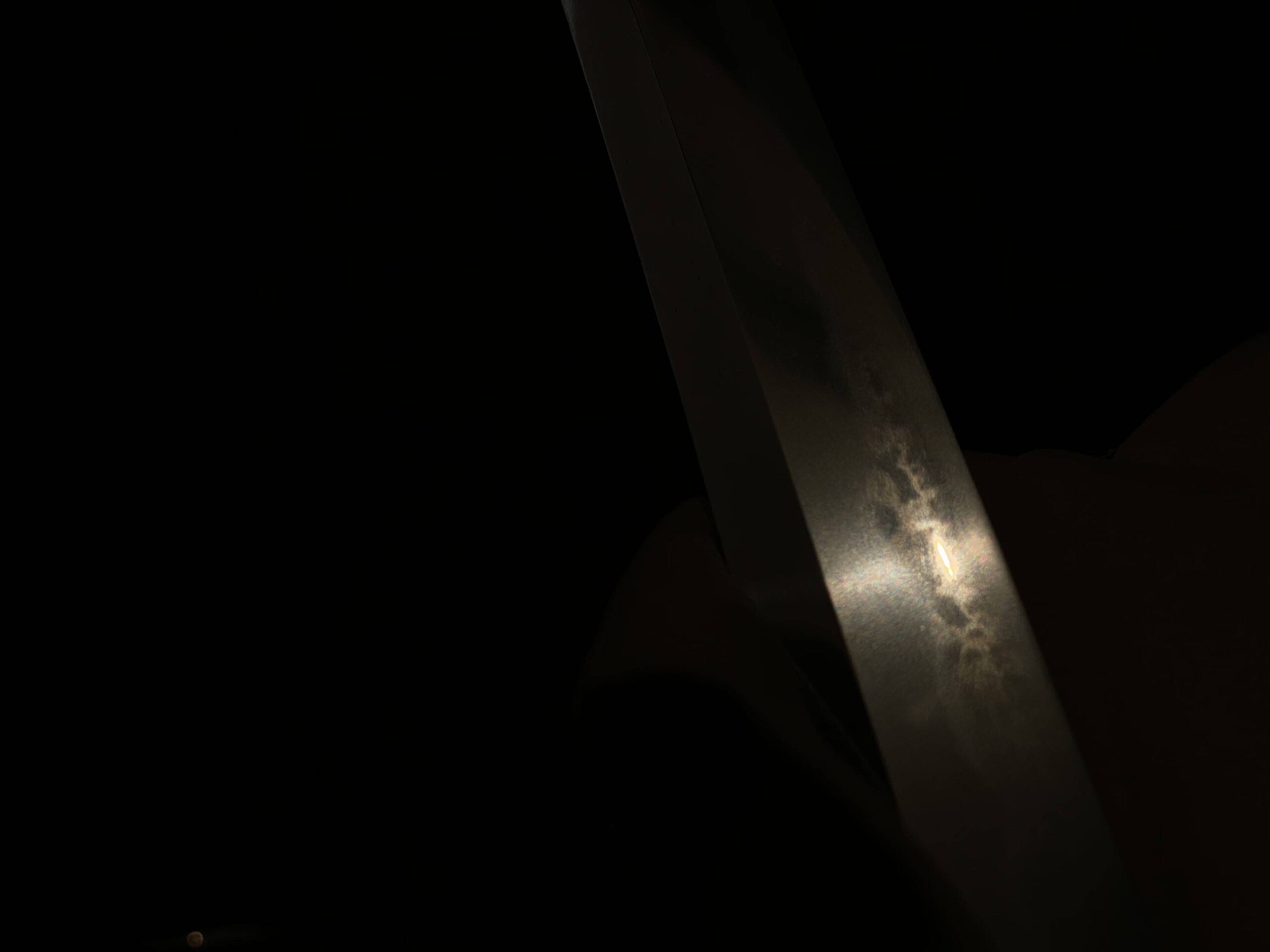
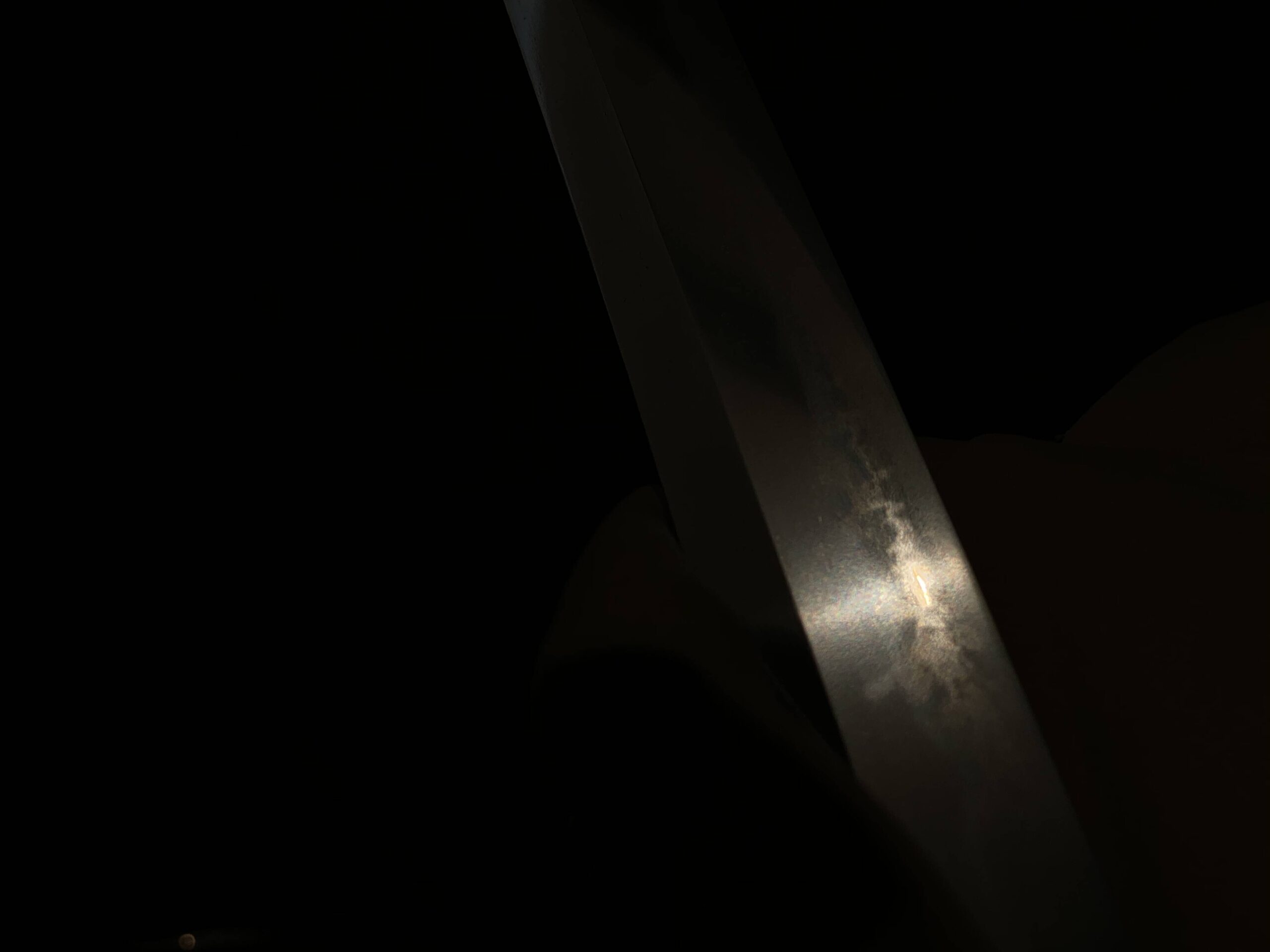
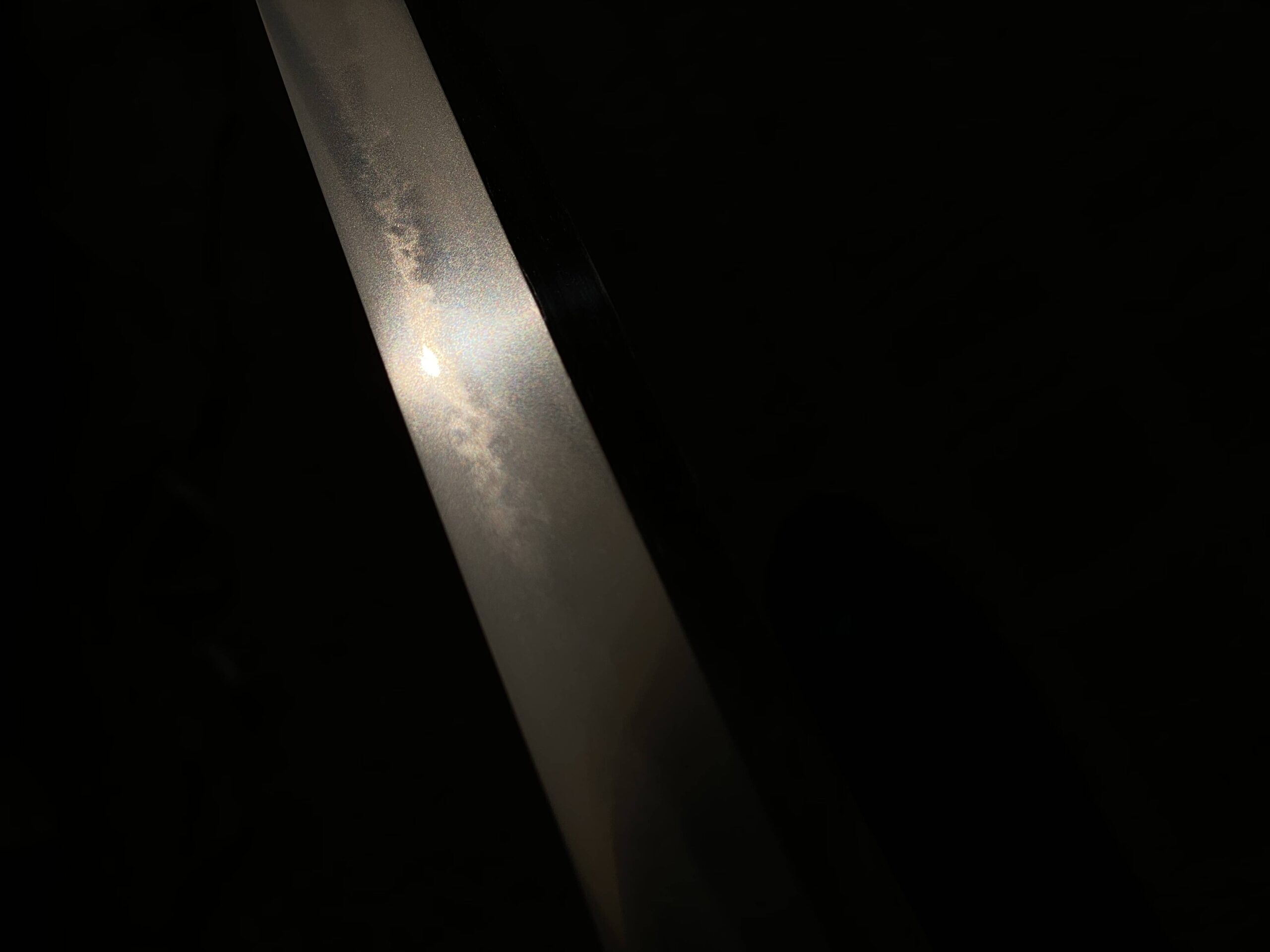
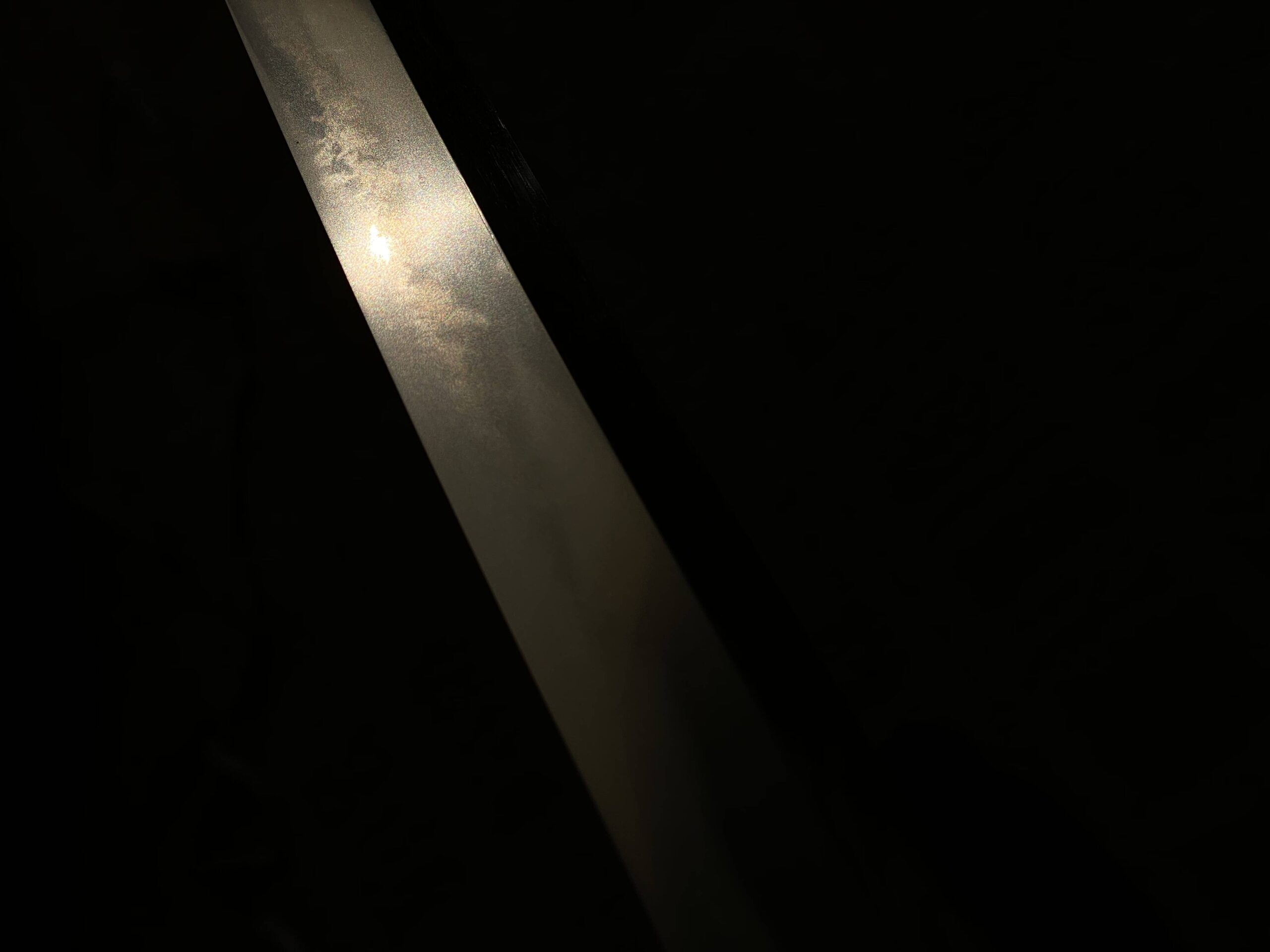
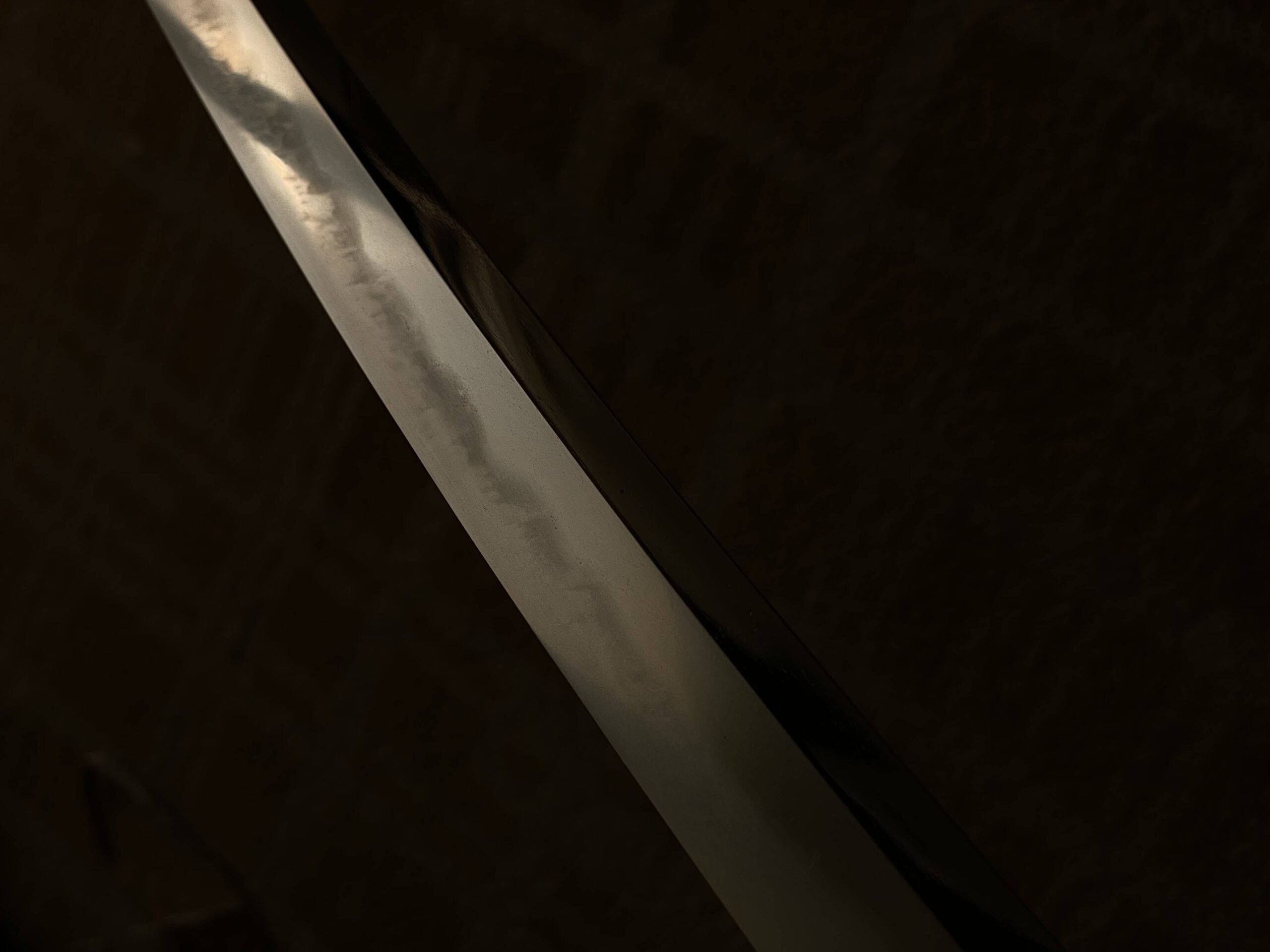



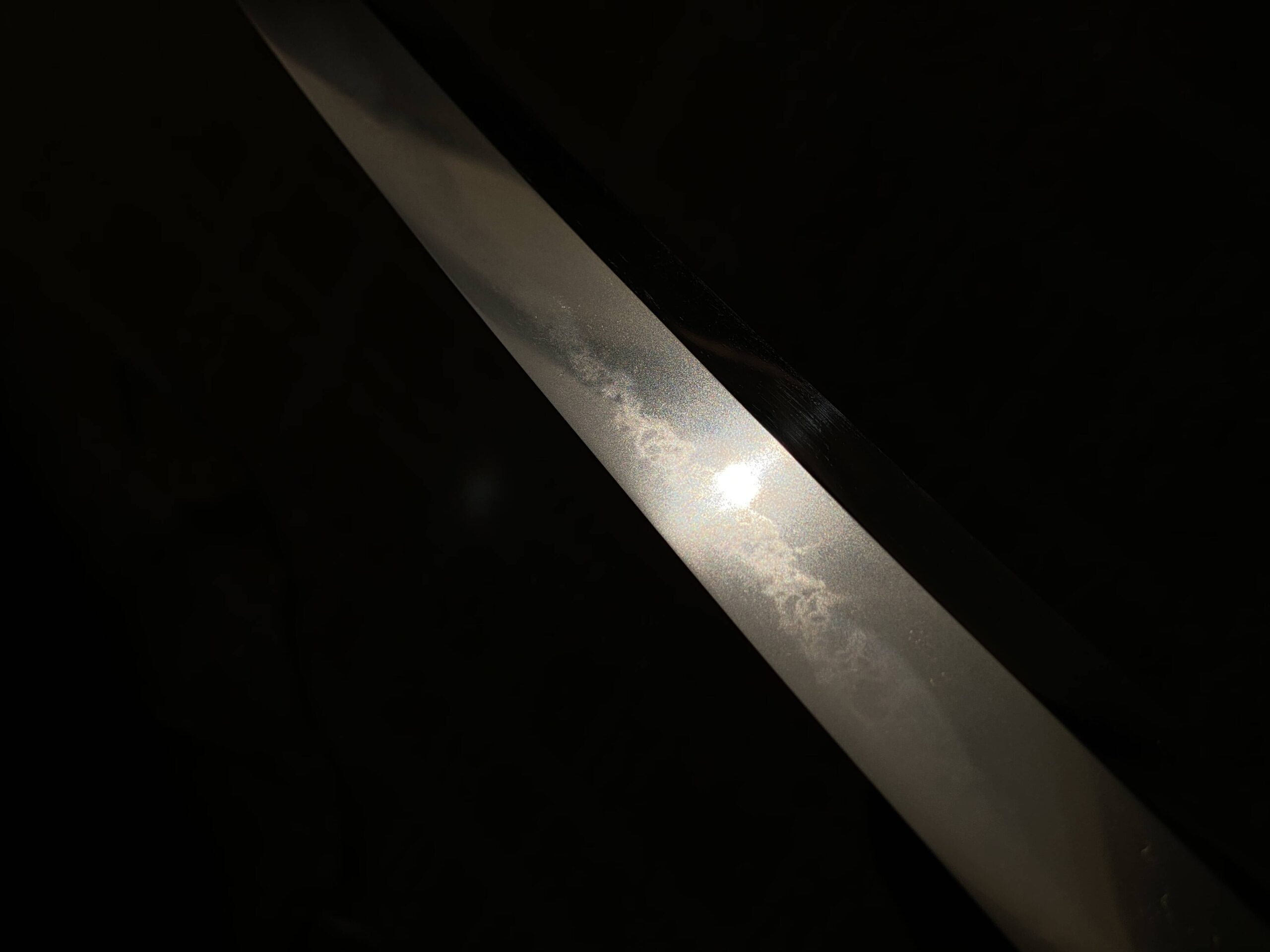
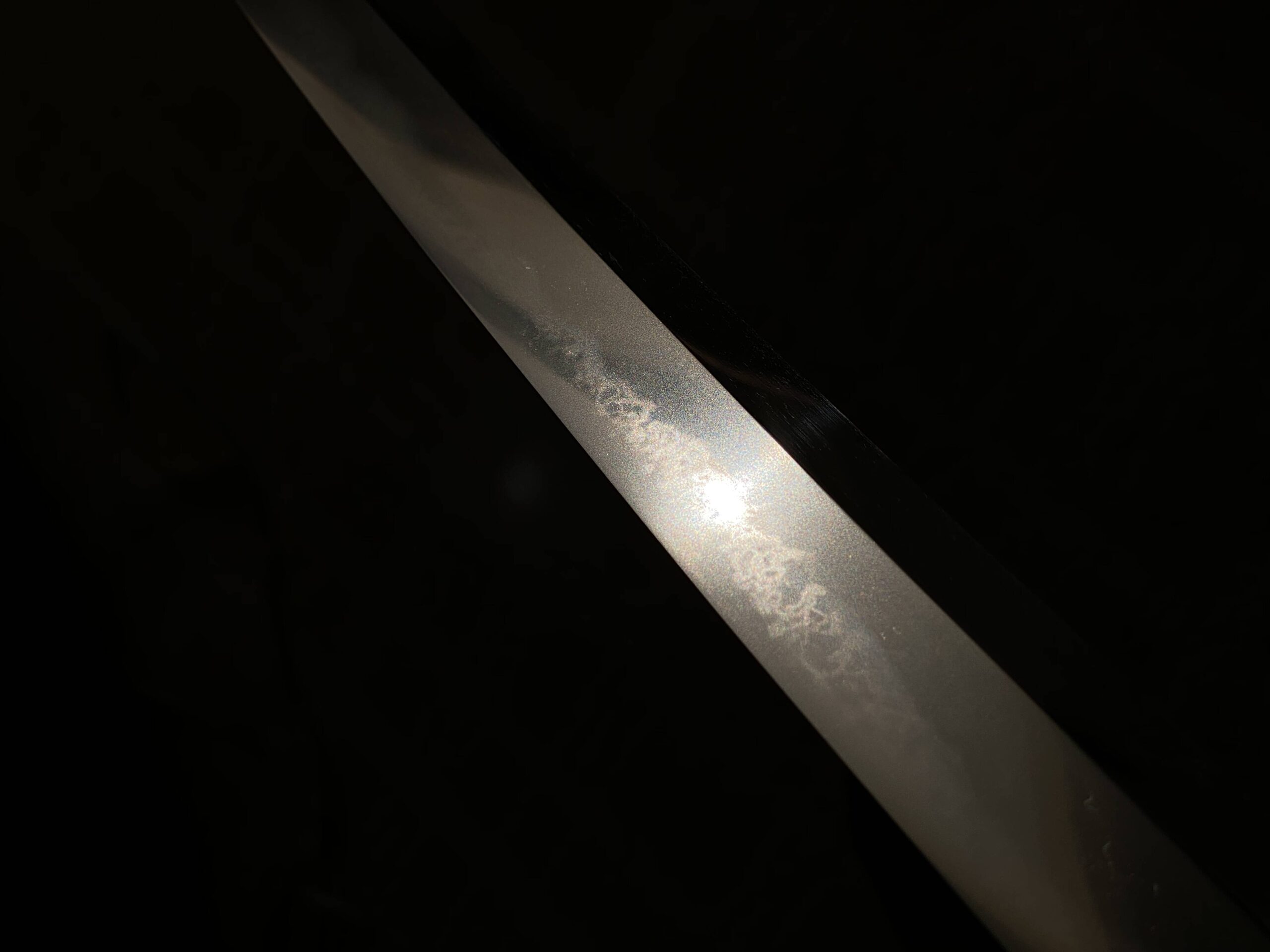
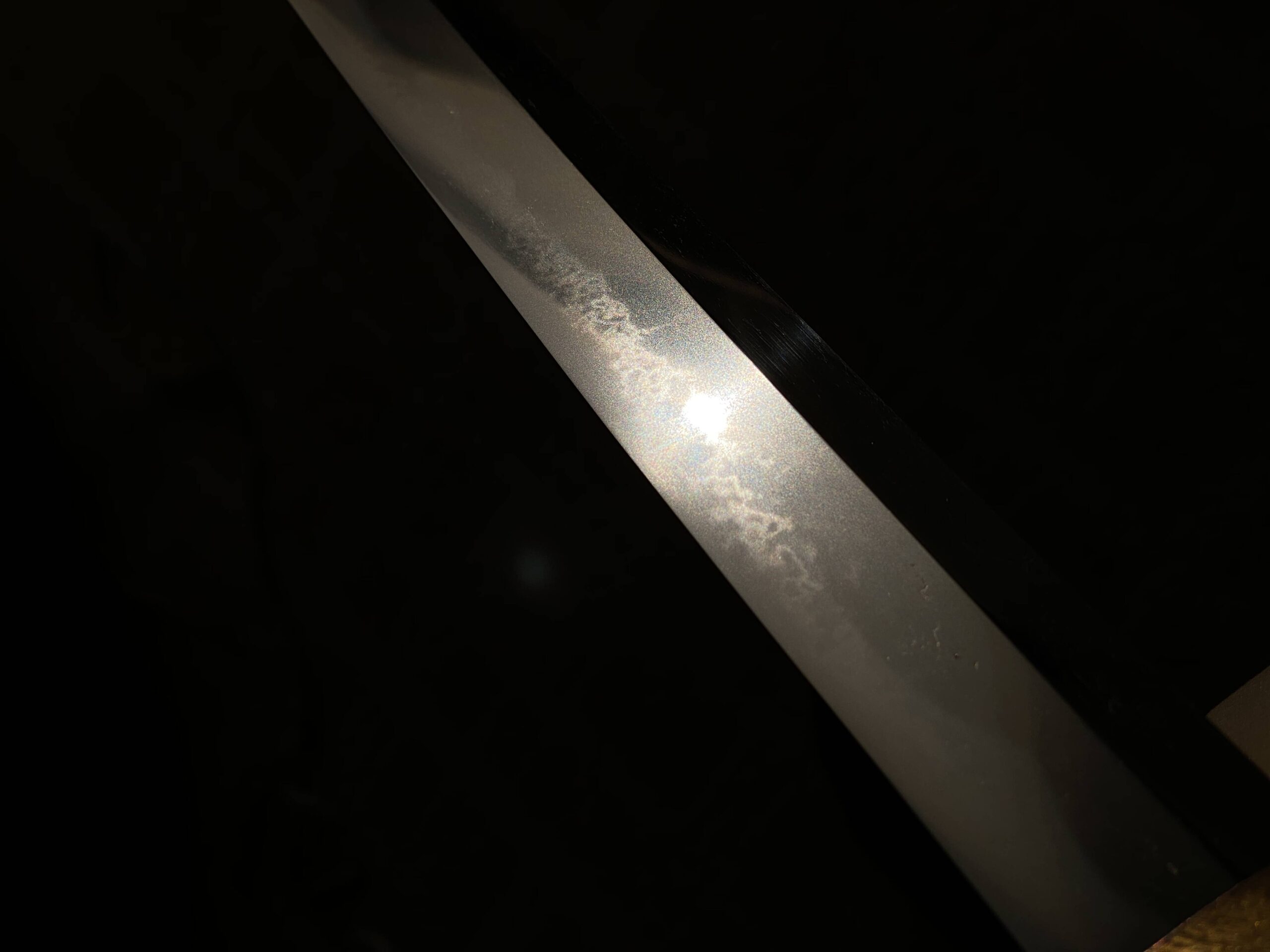
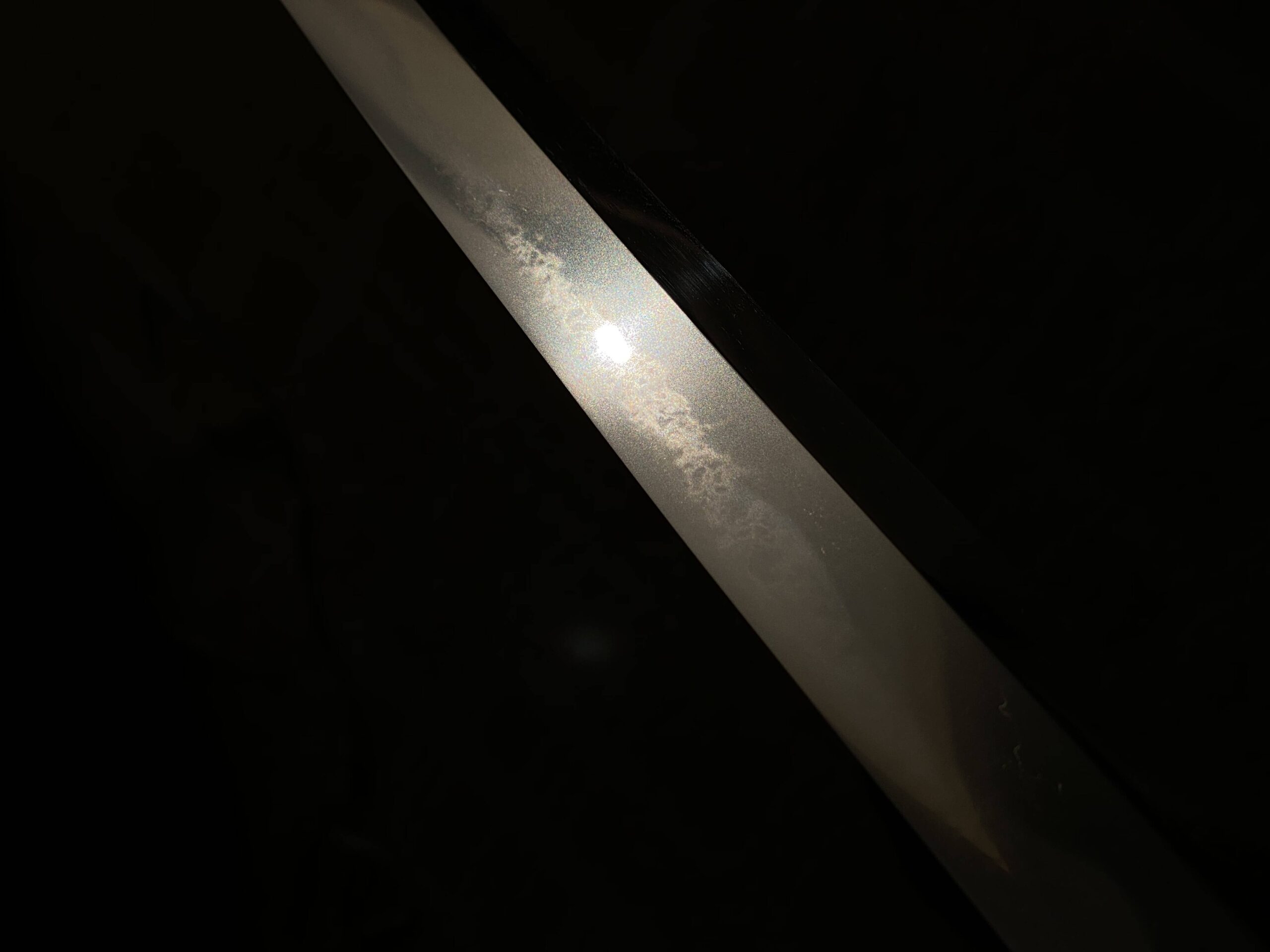
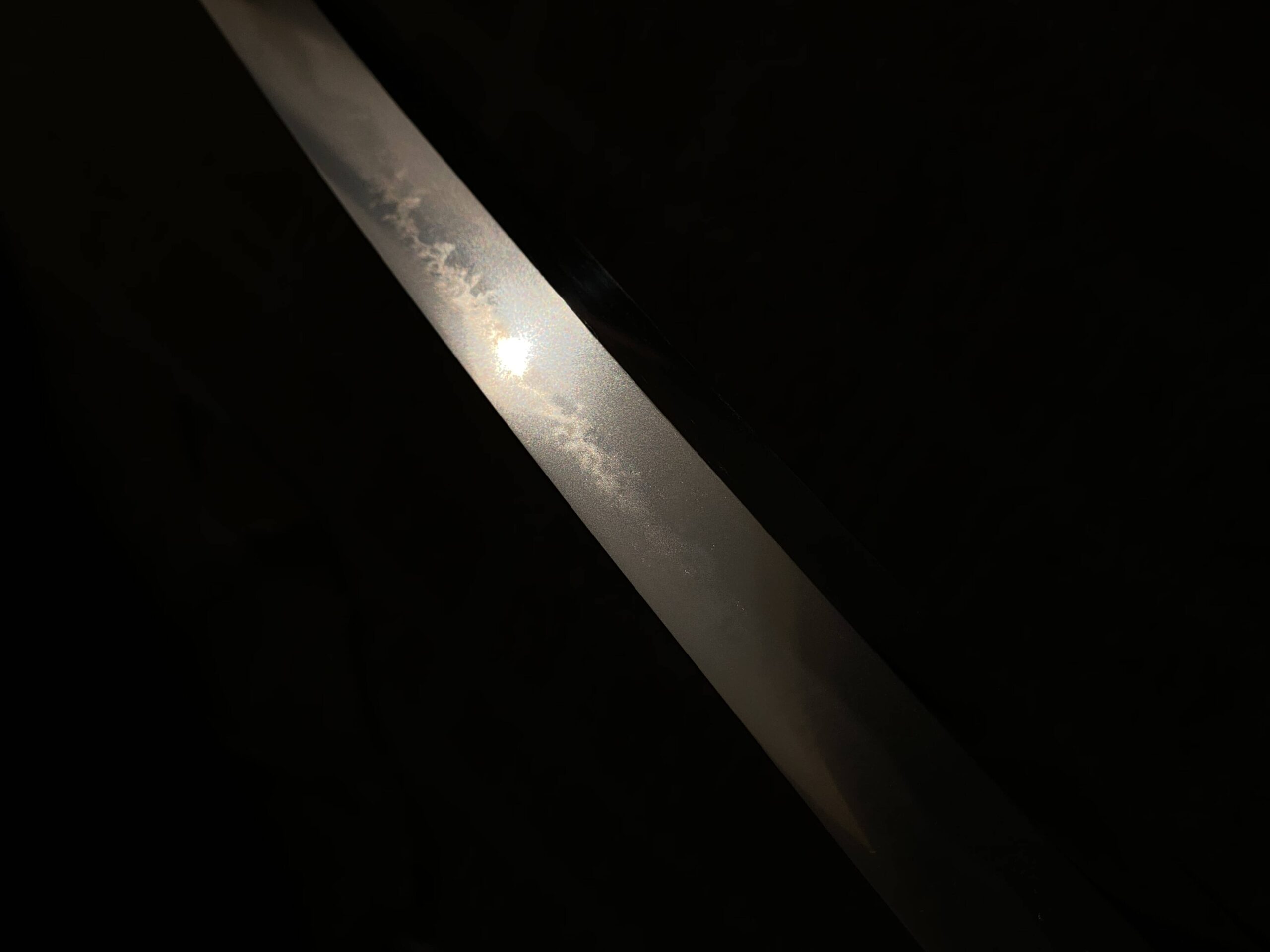

Project Info
Project Description
Katayama-Ichimonji
Tanobe-sensei sayagaki
備前國片山一文字大磨無銘也。
長弐尺二寸九分余
時在庚子弥生探山識「花押」
Bizen no Kuni Katayama-Ichimonji Ö-suriage mumei nari. Midare-utsuri no senmei ni tatsu no hada-ai ni henka ni tomu nigiyaka na chōji-midare o yaki Ichimonji-ha no tokushoku ga meiji-saru toriwake ichirui-chū ni ari chōji no fuda ga ko-moyō de nioiguchi shimari ashi ga komakaku yaya saka-gokoro o obiru ten nado o kan’an-sureba dōha ni shūren-sare ajiwai fukaki yūhin nari.
Nagasa ni-shaku ni-sun kyū-bu yo
Jizai kanoe-ne yayoi Tanzan shirusu + kao
Katayama-Ichimonji from Bizen province
This blade is ō-suriage mumei. It shows an itame-hada with a prominent midare-utsuri and is hardened in a busy chōji-midare typical for the Ichimonji School. Within this school, the rather small dimensioned tassels of the chõōji, the somewhat tight nioiguchi, the fine ashi, and the overall somehwat slanting elements of the ha of this highly tasteful masterwork speak for Katayama-Ichimonji.
Blade length ~ 69.4 cm
Written by Tanzan (Tanobe Michihiro) in March of the year of the rat of this era (2020) + monogram.
Juyo Setsu-mei
Katayama-Ichimonji (⽚⼭⼀⽂字)
Jūyō-tōken at the 66th jūyō shinsa held on December 15, 2020
katana, mumei: Katayama-Ichimonji (⽚⼭⼀⽂字)
Ted Tenold
Measurements
nagasa 69.7 cm, sori 1.9 cm, motohaba 3.05 cm, sakihaba 2.35 cm, kissaki-nagasa 4.4 cm, nakago-nagasa
18.2 cm, nakago-sori 0.1 cm
Description
Keijō: shinogi-zukuri, iori-mune, wide mihaba, no noticeable taper, shallow koshizori that increases again
towards the tip, elongated chū-kissaki
Kitae: densely forged ko-itame that features plenty of ji-nie, fine chikei, and a midare-utsuri
Hamon: chōji-midare in nioi-deki with ko-nie with thin, connected, and closely arranged chōji tassels,
noticeable ups and downs, and mixed with plenty of ashi and yō and with kinsuji and sunagashi
Bōshi: midare-komi with a rather pointed kaeri and hakikake
Nakago: ō-suriage, kirijiri, katte-sagari yasurime, two mekugi-ana, mumei
Explanation
The Katayama-Ichimonji (⽚⼭⼀⽂字) School has its roots with the Fukuoka-Ichimonji smith Norifusa’s (則房)
move to Katayama, where the group he founded there henceforth flourished. Traditionally, it was believed
that Norifusa had moved to a place in Bitchū province with the same name, but recent studies suggest that
there was also a Katayama close to Fukuoka in Bizen province and that it was this Katayama where Norifusa
actually moved to. However, this issue requires further studies. The characteristics of the Katayama-
Ichimonji School are a strong and clear jigane, a chōji-midare that is composed of somewhat smaller
elements than it is the case with Fukuoka-Ichimonji School works, midare elements that tend to slant, and
thin ashi within the ha.
This blade shows a densely forged itame that features plenty of ji-nie, fine chikei, and a midare-utsuri. The
hamon is a chōji-midare in nioi-deki with ko-nie that consists of thin, connected, and closely arranged chōji
tassels, that shows noticeable ups and downs, and that is mixed with plenty of ashi and yō and with kinsuji
and sunagashi. Thus, the jiba clearly reflects Katayama-Ichimonji characteristics and we are thus in
agreement with an attribution to this school. Particularly noteworthy with this blade, which is of an excellent
deki, are its magnificent and massive shape with plenty of hira-niku and that the ups and downs of the ha
and the hataraki within the ha stand out from other works from this school.
Copyright © Markus Sesko 2022.

